#I really like western gothic arches
Explore tagged Tumblr posts
Text
Wednesday, April 23 - Slea Head Loop and Dingle










After yesterday's washout, today was supposed to be free of rain, but it didn't quite work out that way. We had decided to do the Slea Head drive, which takes us out to the western ends of the Dingle Peninsula. Very quickly the road went from two generous lanes to two narrow lanes, and then just abandoned the idea of lanes whatsoever to be down to one-lane between sheer cliff and stone wall. Luckily, most of the traffic at this time (early) was moving with us, and the pull offs were all on our side of the road (not that it mattered with just one lane).
The views out to the Blasket Islands were a bit muddled by low-lying clouds, which contained fast-moving rain and wind squalls from time to time. After several pull-out stops, we found a parking lot near Dunmore Head, which they claim is the westernmost point in Europe, not counting the smaller islands to the west (never mind that Ireland is itself an island, and doesn't really count as mainland Europe). I guess Iceland, too, doesn't really count. Here there was a steep, unmaintained trail up a grassy slope to the top, where we found both what looked like a small Coast Watch station and an ogham stone.
Ogham stones are thought to date to 300 to 600 CE, and are distinguished by an alphabet of lines carved into the edges of the stone, and usually refer to a person. It is still debated whether they developed from runic characters or were simply created as an alternative to Latin letters, indicating an independence or secrecy from the other writings of the time, as these were in the early Irish language There are hundreds throughout Ireland, with the majority being in Counties Kerry and Cork. What is amazing is how many are still upright centuries later, while many more recent tombstones have long since toppled.
We had high hopes for views out to the Blasket Islands, but the rain came in, and we were lucky just to find the car park, although the rain cleared a bit as soon as we were down. Our next stop was another small peninsula which also had a great approach. Here there were many standing stones (none inscribed), some arranged in rough circles. This was obviously a place of importance, but there was no signage for that interpretation. Some of the lower clouds had lifted by this time, and for a time the views north to Sybil Point were wonderful (at least until more clouds rolled in). The area around Sybil Point was used as a filming location for "The Last Jedi " (the little cluster of huts where Luke trained Rey, and where Chewbacca roasted the little puffin-like creatures).
From here we headed to a couple of archeology sites. The first was the Gallarus Orotory, which is a church like structure dating back to the 7th or 8th century, and built like an inverted boat. The structure is built with a corbel arch, rather than the later keystone arches or Gothic arches of Medieval times, and is all dry stone laid. It is really a remarkable little building, quite symmetrical and elegant in its simplicity. It has a lintelled door on one end and a small window on the other. So far, I think it's my favorite thing I have seen in Ireland.
Nearby was the Kilmalkedor Church, which was built in the 12th century, and which had details typical of its time. It was also very human in some of the mismatched stones that outlined windows and the roughness of the arches. In front of the church was another Ogham stone and a cross that predates the typical "Celtic" crosses. More remarkably, there is a stone near the western edge of the graveyard that is a standing sundial (it's the picture of the stone with a flat top).
By this time, it was getting on to late afternoon and was finally clearing nicely, we headed back to Dingle and had an early dinner (or very late lunch) at a little fish 'n chips trailer next to our pub. It had been open on Monday when we arrived and smelled so good, and always had a line. It was closed yesterday because of the foul weather, but today we were able to sit at a little picnic table and enjoy.
We also wandered around town a bit more, catching the lovely light after the storms, and appreciating the lack of wind. It was wonderful to see reflections in the harbor where yesterday there had been white caps. Unfortunately, there was also a heavy cloud bank to the west with tomorrow's weather, which is not supposed to be good. We weren't able to find any music tonight, but still enjoyed the rustic ambience of Dick Mack's.
Tomorrow we head only about 100 kilometers away to the Ring of Kerry, and our place in Portmagee, just west of the Ring. We have identified a bunch of stops to make along the way, if the weather permits. We've enjoyed Dingle. Although it is a tourist town, most of the shops feature quality woolens, or nice artwork, pottery or other quality souvenirs, instead of the usual t- shirts and made in China stuff. And there's nothing wrong with a town of 40 pubs!
0 notes
Text

Basilica of St. Servatius/Church of St. John in Maastricht, Netherlands
I chose these two because of the difference in their aesthetics. The Basilica of St. Servatius is in the Romanesque style, made of stone and fortress-like. The Church of St. John, on the other hand, is in the Gothic style, made with pointed arches and other decorative features.
These places' connection to the Reformation is quite interesting. While St. Servatius is affiliated with Roman Catholicism, St. John came into the possession of the Dutch Reformed Church. Their proximity is all the more intriguing knowing this.
I was really surprised by the stark differences in these buildings' appearances. The western portal of St. Servatius was most impressive to me. The red color of St. John's tower was very striking.
0 notes
Text
Flower power Friday
We intended to start our touring today with a visit to St Paul’s Cathedral, which Bart and I for some reason hadn’t been able to do when we visited last time. But I was foiled again, by all these people in funny robes who for some reason were allowed to take over the cathedral when EYE wanted to see it! This will become my white whale.

We moved on to St Dunstan’s in the East, eight-time champion of the London Small Garden Championship award, which featured a burbling fountain, gothic arches, a mysterious floral scent we couldn’t tie to a particular plant, and a warbling blackbird whose melodiousness surprised me despite the many references to blackbirds singing that I realized I had been indoctrinated with and dismissed (blackbird singing in the dead of night…. Four and twenty blackbirds baked in a pie, which when opened began to sing…). I guess I thought blackbirds sounded like crows.


Next up was the fashion and textile museum, a small exhibition which nevertheless featured many textiles that deeply excited Annie. Here was my favorite, though I was slightly embarrassed to read that the Vietnamese artisans first wove the piece in primary colors and then dipped the piece in a golden-hued dye to “appeal to Western tourists.” Guilty as charged:

We visited the Shard for high tea and panoramic views of the city, replete with lovely conversation, and also a restroom with WAY too much mirrored glass in the restroom stalls:


And then back to the apartment for a short rest before embarking on ANOTHER culinary degustation at Dishoom. Regular readers of this blog will recall that Bart holds a permanent grudge against Dishoom for their snobbish dismissal of us at the Kensington location in favor of some large-black-car-type personality who didn’t even show up while we were waiting. I knew I was never going to go back there with him, so this was my chance, and I am happy to report that while there were four front desk staff who were all sporting officious headsets, our waiter was extremely solicitous even though we did not arrive in a limousine. Due to our recent lunch we ate lightly, but very much enjoyed the samosas, grilled chicken, and lamb. When we left around 7 there was a massive line out the door and I was very grateful to Annie for acting early to obtain our reservation.
Our final stop of the evening was a floral exhibition at the Saatchi gallery in Chelsea! Mostly an exhibition of art pertaining to flowers, though there was also a flower arranging workshop that we did not get to participate in. I appreciated the variety of artwork that made it into the exhibition: album and book covers, botanical illustrations, clothing, wallpaper, The Art of Spring, pressed flower arrangements, a giant dried flower curtain sculpture/instagram bait, movies of flowers decaying, almost-abstract things in weird colors, photographs of protestors putting flowers in guns, color block prints, jewelry, really everything you could think of. Annie said she thinks she likes art about flowers better than real live flowers, because real flowers decay too quickly. I think my most favorite is seeing flowers in real life (side note: I have been appreciating all the pear blossoms, magnolias, and daffodils that have been decorating the streets here), but I do still appreciate efforts to capture their symmetry, transience, delicacy, and color in art.
My favorite pieces:
This, for the color, composition, variety, simplicity and detail

This, for the contrast between the smooth blankness of the dress and the color and abundance of the flowers, and the suggestion of vibrant interiority that is superior to an actual bosom (lol, I may be overreaching here but whatever)


And this, for being actual (and semi-seasonal, I think!) flowers arranged beautifully by the person giving the workshop. Watching the participants leave with their variously limp and staid bouquets — made from the same base flowers as here! — and comparing them to the expertly arranged pieces gave me a new appreciation for the value of the sculptural design of a bouquet, even beyond the selection of complementary colors and shapes. So thank you to florists.

0 notes
Photo
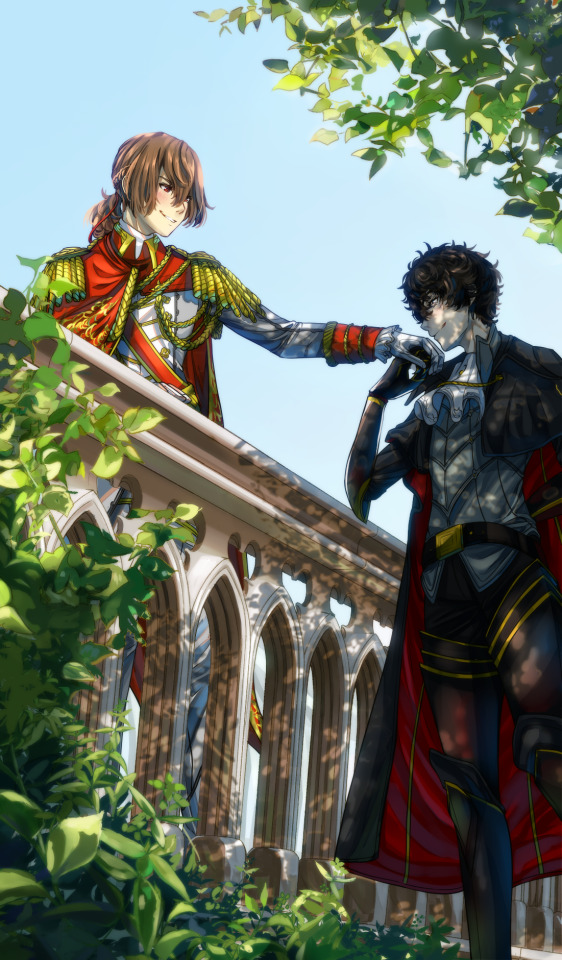
ShuAke Week Day 3: Royalty
Knight Akira and his prince share a secret moment
Bonus: some concepts
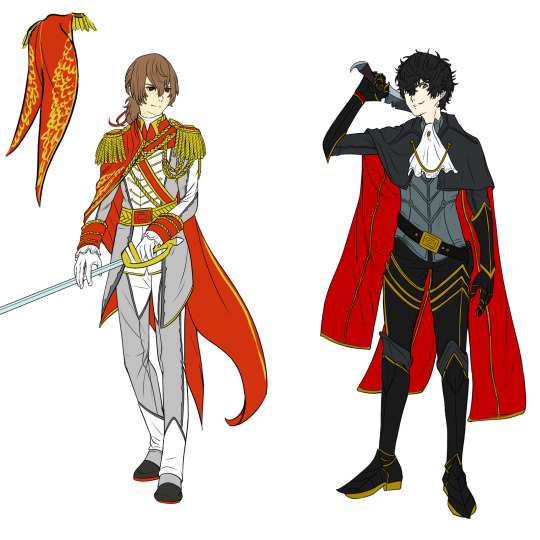
#shuakeweek2022#shuake#akeshu#goro akechi#persona 5#persona 5 protagonist#akira kurusu#ren amamiya#persona 5 royal#love it when joker calls goro 'my prince' in fics#went a big trigger happy with the shadows#hopefully it's readable#I really like western gothic arches#my art
2K notes
·
View notes
Text
Favorite Historical Architectural Styles
Since I've done my favorite historical fashions, I thought it would be fun to do historical architectural styles too. I want to write more about architecture too, but I've started thinking should I do a separate blog for architecture and architectural history or should I just do it all here? I think it would be better in a way that I wouldn't have to worry if anything I want to write is too far from the actual topic of the blog, but then again, there is a lot of overlap, especially when it comes to Arts and Crafts movement (which I'm currently writing my thesis about and which I definitely will talk a lot about), and also I would have to manage yet another blog.
Anyway, I'll again do this from oldest to newest. I will limit myself to western styles (except when we get to Modernism all styles are very international), even though there's a lot of non-western styles I enjoy, but it's what I know most about.
Perpendicular Gothic

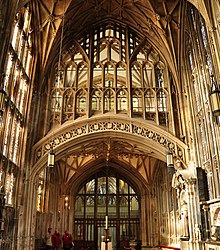
I love Gothic architecture in general and the several first entries will be my favorite sub-styles of it. I love the the way Gothic Cathedrals try and so often succeed to feel like forests. I love how the structural elements are used to create the aesthetic. I love the organic visual elements. I love that it's such a unique style in Western architecture. And I love the amazing craftsmanship that went into it.
I'm particularly a fan of English Gothic because of it's insanely beautiful and complex ribbed vaults. From English Gothic my favorite though is the Perpendicular style, which was basically the English late Gothic. It's characteristics can be seen in the second pic. It has the stretched arch and the very flowing and organic traceries. I do include here the rest of English Gothic too, since even though the Perpendicular style is my favorite of them, all if it is still one of my Gothic favorites.
German Late Gothic
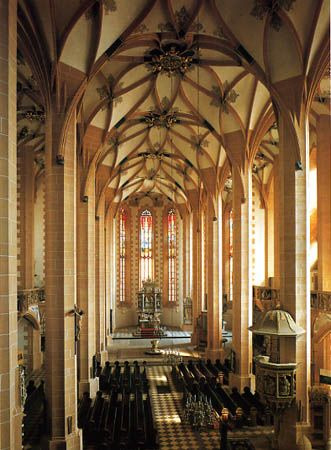
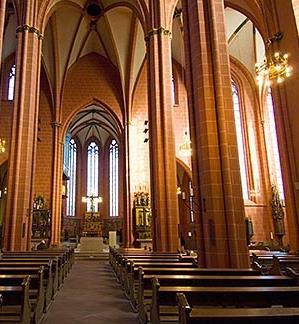
As it's becoming clear I love Late Gothic architecture in general the most, and in the geographical axis I also love German Gothic. Early and High Gothic were mainly divided into French and English styles and the French style dominated in the continent, just being altered a little to the local building traditions outside of France, but during late Gothic it diverged much more strongly into different styles.
German Gothic also has beautiful complex faulting (though less insane than English) and it also has that same pursuit of massive height French Gothic has. Those combined with that Late Gothic's more streamlined flowing and organic aesthetic, some of the German Late Gothic cathedrals really sell that feeling of standing in a forest.
Finnish "Gothic"

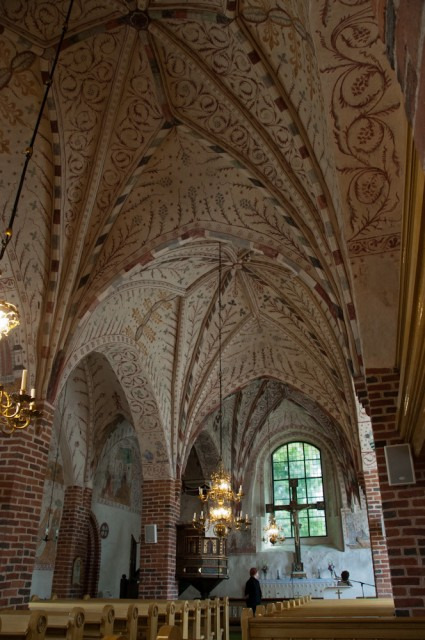
I have a soft spot for the Finnish Medieval stone churches, which are not nearly as sophisticated or detailed as the other European counterparts, but still made with beautiful craftsmanship and they have some cool own features. It's very far from the European Gothic traditions, as you can see, but that's still the influence, hence Gothic in scare quotes. I love the simple outward appearance with the exposed thick stone walls, the details of the gable that worked as the calling card for the building master and the very steep roof. Like everywhere at the time, the roof in these has wooden structure, which is frankly super cool. It was not a simple engineering problem to make a roof that steep and massive at the time, but the structure works so well there's 600 year old roofs with the original logs still working perfectly well. I also really love the original medieval murals in them, which were painted over during the Reformation (you can't have color in a Lutheran church damn it), but thankfully some of them have been restored from under the paint.
Finnish "Renaissance" Log Churches


Renaissance also didn't land in Finland similarly as it did rest of the Europe. When Renaissance was going on in Europe, they still were building those "Gothic" churches here. These log churches were based on Scandinavian version of the Renaissance church, but they didn't really look like Renaissance churches, and were kinda it's own thing continuing a lot of the aesthetics from those Gothic churches. This is a highly specific style, but I just think they are so cool and pretty? Like they really made a CUPOLA out of log.
Arts and Crafts Movement


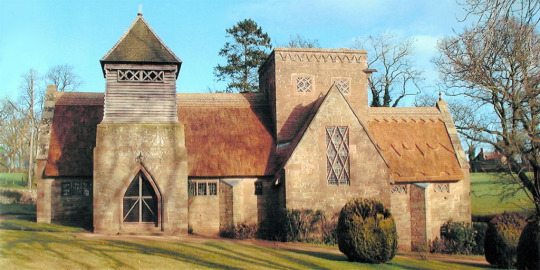
Arts and Crafts Movement didn't have exactly a style, rather a design philosophy that was more important than specific style. There's of course a lot of stylistic similarities in the works of the different members of the Movement, because they had overlapping sources of inspiration and were influenced by each other, so we can think of it as a style. I could, have and will talk about them for hours, but briefly now: It was a moment in latter half of the 19th century and early 20th century and their goals were reviving craftsmanship skills and professions, socialism, opposing industrialism and abolishing the hierarchy between fine arts and applied arts. They were very much influenced by Medievalism and Gothic art and architecture, though unlike Gothic Revivalist, they took more from the guiding principles than the aesthetics. They basically started Modernism and lay ground to all the Modernist architecture's main principles, like form follows function.
Art Nouveau


Art Nouveau was directly influenced by the Arts and Crafts Movement and was the first mainstream Modernist style. I especially love the more toned down Finnish Art Nouveau, or Jugend as it's called here, but I do love the style more broadly too. I'm not that into those almost Baroque style versions of it though, with barely any straight lines. I love the round doors, the stylized floral patterns and the use of light.
Organic architecture
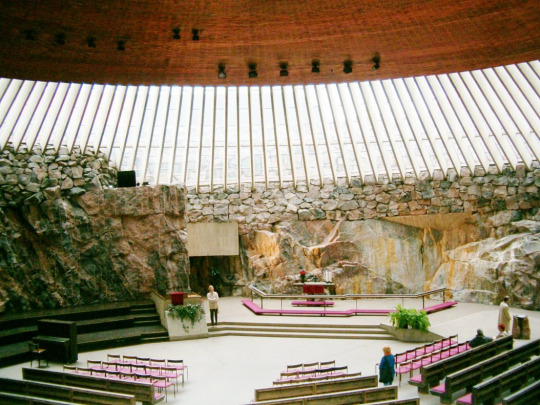


This has to be my favorite modernist/post-modernist (?) style. It's direct successor of Arts and Crafts movement and it's also more of a design principle than a unified style. There is some stylistic similarities, but it is stylistically very diverse philosophy. It was most prominent during the 20th century, but it always stayed in the sidelines, though there are still architects who might be considered practicing organic architecture. Organic architecture is all about living in harmony with nature, taking inspiration from it, designing the building to fit the building spot and the surroundings, extra care taken in to preserve the nature already there, and using local natural materials when possible. My favorite architects are Raili and Reima Pietilä, who were most prominent organic architects in Finland. (I almost moved into apartment designed by them, but it was in pretty bad condition, so it wouldn't have unfortunately been worth the price.)
Brutalism


I know it's not for everyone and it's not easy to make it work but when it works, it really does. It was born in 1950s during the reconstruction era. Brutalism is not just concrete though. The point is to show the raw materials and the structural elements. Technically a lot of Gothic and Arts and Crafts architecture is then brutalist. Timber frame architecture? Also brutalist. I'm only half joking, of course the style itself is also very bare and, well, brutal, but I love it for the same reasons. I really love bare textures of materials and exposing the materials of the structural elements. And I do actually really like the texture of concrete. Though I will say concrete is destroying our world and we should use it as little as possible. But we should also protect old buildings and keep using them rather than built new ones, so I feel fine admiring the old brutalist buildings. The best brutalist buildings combine materials very intentionally and make works of art with the light.
Bonus - Favorite contemporary architecture: Traditional methods


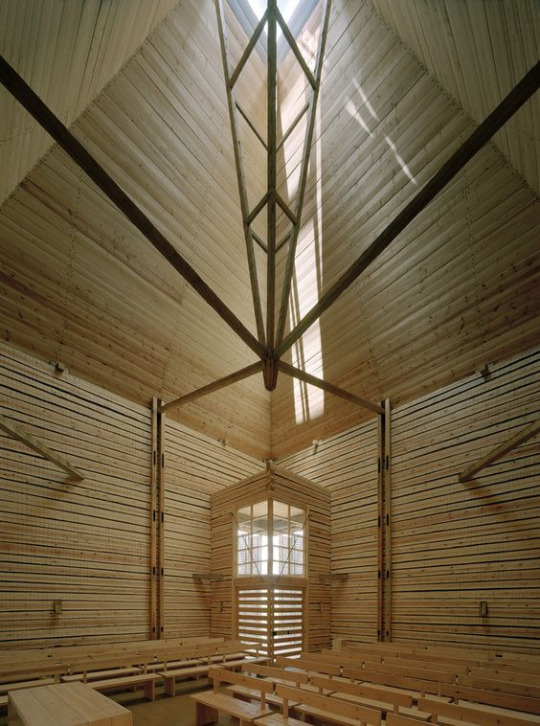
As we're living in the post-modern times, there's not really unified and specifiable styles or architectural ideologies anymore. They all kinda flow into each other and architects don't organize themselves into clear groups based on style and design philosophy. So it's hard to put into words the style I like in contemporary architecture. There's been growing interest in studying traditional structures and methods, learn from their sustainability and incorporate them into contemporary architecture. They are techniques that have been developed through trial and error on the span of centuries, so we really don't have to reinvent the wheel here. Traditional methods of a given area have also been developed for that area and it's climate, from the materials available there, so they also push us to use local materials. Typically these traditional structures are very simple, often made from solid material, which makes them easier to built without construction error (a huge problem in modern structures), and easier to fix and maintain, when inevitably there is issues. Also they are beautiful, definitely more so that steel and glass. I love solid brick structures, log structures, timber frames, natural stone, rammed earth and all of them, especially when these beautiful materials are left bare.
#architecture#architectural history#historical architecture#history#art history#modern architecture#gothic architecture#brutalism#arts and crafts movement#art nouveau
555 notes
·
View notes
Text
On Riots and Resolutions (Part Two)
The remaining ask round-up portion, building on the answers from last night's post.
Content Warnings: Discussion of real-life hate groups; one ask conflates mental illness with radicalism and makes some bald statements that there can only be one correct opinion about the canonical material in question.
This post has its usual share of footnotes, but I’ve put them at the end of their associated ask reply rather than all at the end like usual.
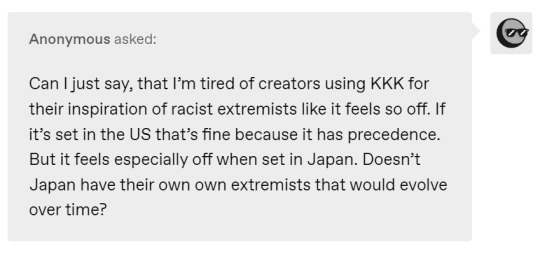
Two thoughts: Firstly, Japan’s extremists, as I understand them, tend to be either rampantly nationalistic—war crime deniers, people who hate Japanese residents who don’t match up to what the nationalists see as really Japanese (*waves to Part One*), sometimes they like the U.S. but they don’t want to be seen as being submissive towards it, that sort of thing—or outright cultists.
Using the nationalists as a model is tricky because, as so many have said, heteromorphs aren’t of a different ethnicity/nationality, so they nominally shouldn’t be objectionable to those whose chief issue is people/influence from other countries. (Nominally. *waves to Part One again*) They’re also a very fraught group to parody, given Japan’s to-say-the-least unresolved issues with exactly those nationalistic sentiments, historically speaking.
As to the cultists? Well, Japan has piles and piles of those. Indeed, the country has so many that one of the most common terms for alternative spirituality groups, new religious movements (NRMs), is actually a direct translation of the term Japan itself uses, shinshūkyō. So far as I’ve been able to gather, the proliferation is a result of the country having been loosed from the mandate of following the state religion (Shinto) just as a huge influx of Western theology came flowing in after World War II. That developed further in the 60s and 70s—indeed, it’s quite easy to see Western ideas of what religion is and how it looks coming to Japan in the same general period as New Age spirituality in the West forming with elements borrowed ideas from Hinduism, Buddhism, and other Eastern religions.
While Japan has hundreds and hundreds of NRMs—over 2000, according to one op-ed I read—the country also has a sizeable suspicion of them, for one big, glaring reason: the sarin gas attacks carried out on the Tokyo subway in 1995 by Aum Shinrikyo. Those attacks led to a huge backlash against new religious movements in the country, including the passing of some very targeted laws.
Obviously, with so many of them around, I can’t say for sure whether or not Horikoshi based the Creature Rejection Clan on any of them in particular, but Twice does point out that they have some religious elements, and certainly there are plenty of NRMs in Japan that hew to the arch ethnonationalism of the country’s extreme right. The kegare thing, too, can hardly be called secular; it stems directly from Shinto belief. There aren’t any NRMs I’m personally aware of that use gothic trappings and skull masks, but then, neither did the KKK.[1]
That all leads into my second thought, which is, “Well, is the CRC based on the KKK? Or is that just us assuming because it’s what we relate them to?” As I said a few times in Part One, I can’t read Horikoshi’s mind—but I have reservations about just assuming that some random Japanese guy is that familiar with a U.S.-based hate group that has never been active in his country.
Horikoshi is a noted fan of American comics, so I suppose it’s possible he’s heard that anecdote about Superman taking on the KKK, but if I were reading an American comic with a plot about a doomsday cult planning an attack on a public transit system, I wouldn’t assume it was a reference to Aum Shinrikyo just because I knew the author liked anime, you know?
For another example of Western fans projecting their own concerns onto a non-Western work, it was widely assumed among American readers that the Ishvalan plot in Full Metal Alchemist was a comment on the Iraq War. However, when asked about it, Arakawa actually said she based it on the way Japan treated the Ainu. That desert setting completely fooled people!
So, even if the CRC feel a little too on the nose to not be based on the KKK, it’s worth considering that Horikoshi could have any number of inspirations there. He may well have been just picking and choosing the visual indicators he liked to get the point across, and the ones he landed on say “KKK” to a U.S. reader without them having been an intentional model.
-- 1: The Nazis, now, they used skull trappings, and are of course much more known for black uniforms, too. --

Would that such were more normalized! But even if it were, the time crunch on Shonen Jump publication is such that I doubt most of its authors would have the leisure to do a bunch of back and forth with sensitivity readers anyway. I imagine a lot of those authors have pretty limited hours and energy to spend all week working on their manga to also add a bunch of supplemental reading that also basically counts as “work for the manga” as opposed to literally any other kind of media intake that would let them turn off for a while.
I’m not going to say readers shouldn’t ask for better, or should just shut up or go read something else if they have problems with what an author is writing. Obviously! That would be massively hypocritical of me, given all the time I’ve spent complaining about this very issue, or the mass arrests, or whatever-all else. But then, I’ve always approached the issues Hori raises with his villains with the view that they’d fall flat eventually. Shonen Jump is just too mainstream an environment for me to think that Horikoshi would be allowed to say anything truly radical, if he even wanted to to begin with.
And maybe he’ll get feedback on this aspect of the story from readers and reviews and rethink some of it. I’ll always remember this article about an interview with the author of Sword Art Online, Kawahara Reki, in which he talked about how visiting American conventions had inspired him to try to do better by his heroines.
Of course, some people double down instead, like One Piece’s Oda Eiichirou, or reflexively lash out when criticized, like Vanillaware’s George Kamitani. Maybe Horokoshi will just go on thinking like he does because he doesn’t work in an environment that’s going to challenge him on his views; maybe he’ll seek out more mature environments to tell the more mature stories he clearly wants to tell.
In the meantime, though, it’s not as though he’s the only game in town. There are other manga out there, ones that have lists upon lists at the back of their volume compilations detailing the resources and contacts the authors used as they were writing their stories.
Just of what I read or have read, Blue Period, Golden Kamuy, Ancient Magus’s Bride, Showa Genroku Rakugo Shinjuu, and any of Mori Kaoru’s historical works, like Victorian Romance Emma or Otoyomegatari, come to mind. Shonen Jump stories can be fun, but I don’t exactly read them expecting the manga equivalent of high literature, you know?
…On the other hand, even fellow Shonen Jump series Akane Banashi credits a rakugo supervisor every week. I suspect this speaks to a certain uncomfortable truth that many authors are going to be a lot more aware of their own ignorance—and, crucially, far less defensive about accusations of being hurtful, irresponsible, or discriminatory—when it comes to portraying things like art, specialist hobbies, historical periods or foreign countries: subjects that are legitimately distant from their day to day lives. That, in turn, may make them more willing to do the research with an open mind, as opposed to just winging it on things they believe they already understand well enough or have already formed opinions on, like the lived experience of minorities or how the legal system treats (or should treat) people who break the law.
The fact that lazy or offensive portrayals might come out of privileged ignorance rather than maliciousness doesn’t make them less lazy or offensive, of course, especially if an author chooses to double down after criticism! But I’ll get into that more in the last ask in this post.
--

H’ooookay, I’m going to lead with saying that, while I agree with your broad point that this resolution is messy and disappointing, I have some significant issues with your points here, things that I cannot just let stand in good faith.
Firstly, as far as comparing heteromorphs to burakumin goes, I have not and would never say that they’re only an analogue to burakumin because I don’t think heterophobia is a 1:1 analogue for any kind of discrimination. It takes elements from a lot of different things: anti-burakumin sentiment, racism, ableism, ethnocentrism, and so on.
I talked about burakumin discrimination in the post you’re responding to because the kegare thing is burakumin-specific. While I’m sure you could find individuals willing to level that word at groups they don’t like, I’m not aware of any other groups that have had kegare weaponized against them on such a widespread, systemic, legally codified level; therefore, burakumin are the reference I used to talk about kegare as it’s used against heteromorphs to police their movements/contact with others.
Secondly, saying burakumin have “the benefit” of looking like everyone else unless they’re outed feels insensitive to me. It’s the same thing as mixing up genuine privilege with being in the closet. Yes, burakumin lineage is something that’s not immediately visible right on their faces,[1] but that’s not the same thing as them being able to live openly without fear of discrimination, especially when there are still resources on the internet that purport to list burakumin neighborhoods, resources that are easily findable on a web search for e.g. the company hiring director vetting job applicants or the paranoid parent who wants to make sure their daughter isn’t getting involved with someone Undesirable.
Thirdly, conflating Qanon extremists with mental illness is a big, wholehearted NOPE for me, especially in saying only individuals who are mentally ill would attack innocent people. I’m certainly not going to say that no one who has ever carried out a mass attack was mentally ill, but it’s absolutely not an identical vector as radicalized resentment.
Fourthly, “making up a massacre” is, I suppose, true in that we’ve never heard of the incidents Scarecrow cites before now, but it’s not as though it’s completely out of the realm of the possible based on what we knew before this arc. We knew law and order broke down around the time of the advent of quirks; we knew there were (and still are!) groups that committed hate crimes against heteromorphs; we knew there had been bloody conflict for years upon years by the time things finally started to settle down circa Destro and the legalization of Pro Heroes.
Hell, the longer I gather evidence and mull it over, the more it seems likely to me that Horikoshi was aware of heteromorph discrimination from almost the very beginning. Shouji’s character profile, in which he pointedly did not have a face reveal and Horikoshi dropped hints about “Shouji’s episode,” came out in Volume 3. Ultra Archive, which talked about how Shouji was told he had a scary face since he was young, was released in 2016; Ultra Analysis, which first raised the crying little girl angle, in 2019. We’ve known for ages that Horikoshi likes to think about the stories of background characters, even if he can’t find room to show them.
Historical massacres? We may not have heard about them specifically before now, but it’s not like it’s a big reach. The CRC really ought to have clued everyone in that heteromorphic discrimination is much worse than Deku, the viewpoint character, ever knew, so I remain aggressively baffled at the constant accusations that all this is “coming out of nowhere.” Yes, I think it could have been more thoroughly developed in advance, but I really do think it’s not that Horikoshi didn’t know, or that he “made it up”; it’s just that he failed to incorporate it organically.
If the story were still the elegantly constructed narrative we were enjoying up through the Endeavor Agency Arc and the early stages of the war, I’d be more skeptical, because Horikoshi back then really was much better at those early hints and teases. But everyone can tell that the story has been a garbled, rushed mess since then, so it’s no big surprise to me that a better-paced exploration of heteromorphic discrimination was a victim of whatever kind of compressed timeline Horikoshi’s now operating under.
Finally, I broadly agree that the portrayal of this conflict was a damn mess on both sides—I particularly share your frustration that fifteen thousand members of an oppressed minority would be willing to attack a hospital under the direction of a known villain yet have given the optics of that attack so little thought that one (1) high-schooler and the sight of a handful of hospital employees standing well away from their line of advance could change their minds—but I’m wholly uncomfortable with your intimation that anyone who doesn’t agree with your specific read on the sides involved doesn’t know what they’re talking about. If you didn’t mean it that way, that’s cool, but I don’t see much other way to parse, “People who empathize more with one side or the other are either uneducated or don’t have discrimination in their daily reality/family history.”
“If anyone disagrees with me, either they’re white people whose opinions don’t count because they’re white or they’re people of color whose opinions don’t count because they’re ignorant,” is just not an opinion I’m going to back up. I saw plenty of POC on twitter and tumblr both who definitely did sympathize more with one side or another and had perfectly cogent, self-aware articulations as to why; declaring their opinions de facto invalid is no way to engage in media criticism OR fandom discourse.
-- 1: Though back in the days when burakumin were legally required to dress and style their hair in certain ways to make themselves obvious to those around them, you would have been able to tell they were burakumin just by looking at them, unless they were actively breaking the law and thus subject to punishment if they were discovered. --

Everyone is, of course, going to have their own read on this, but for my part, I’d rather see people try and fail than just never try at all. That’s assuming, anyway, that the attempt is made in good faith, which I think this plot was—at the very least, it never felt malicious towards the crowd of heteromorphs themselves,[1] though I am still squinting distastefully at the whole Outside Bad Actor element AFO/Skeptic/Scarecrow/Spinner present.
Of course, it’d be nice to know whether Horikoshi’s going to learn anything from this portrayal or whether it’ll just be a full round of backpats for a job halfway done, but saying he should just never have tried at all—well, it’s the same with his writing of women, really. There are some enormous problems, but I’d still rather read the version with all the flaws than the version without all the women.
That’s the long-time fandom participant in me, I’m sure; my stance will always be to take what works and jettison what doesn’t. For all that this resolution desperately does not work, all the reasons that it was something worth looking forward to and getting invested in are still there, too!
But again, that’s something everyone has to draw their own lines on, and I have nothing but sympathy for the frustration of those who, like myself, would never have believed such a facile resolution could be offered to such a fascinating set-up.
-- 1: I’d be more willing to assume malice if the heteromorphs were the only civilians in the story portrayed as so desperately gullible and impulsive, but Horikoshi’s been writing civilians that same way from the beginning. --
-----------------------------------------
That wraps up the asks in my inbox about this plot, at least the ones that were expressing specific anger with Horikoshi or fellow fandom members. I have one or two left that are more directly about the material, which I'll be getting to in the order in which I received them soonish.
I do apologize if these posts came off as preachy in that, "I am allowed to complain, but suddenly when I have anons in my inbox complaining, it's time to talk about nuance and context," kind of way. I do, perhaps, have a certain feeling that I can and will complain about the material to my heart's content, but I don't want to get too pulled into spiraling bitterness about Horikoshi personally because he didn't deliver the challenging resolution I never really believed his editors would let him deliver to begin with.
I promise I still hate the way the arc fell out! And I appreciate you all sharing your thoughts with me. 'Til next time, everyone.
20 notes
·
View notes
Text
“BuT AlL of MiDdlE EarTh wAs WhITE. Tolkien would be ‘rolLiNg in HiS grAve’“
So, if you haven’t heard white proud boys purist Tolkien fans are up in arms over Rings of Power having PoCs in it, because it’s “not historically accurate to European history” (hahaha), and “Tolkien’s intentions”. So I thought I would do a run down on basic European history and Tolkien’s intentions to refute this and the other complaints, plus launch some really valid criticism about the show that’s not about race at all that these fanboys are totally missing because they really didn’t do any of the reading on Tolkien or actual European history.
Yeah, some of you won’t read my profile, but most of this is pulled from my knowledge of European history, Anthropology, and general World building geekery, which is my hidden degree. (I concentrated a ton of classes around this)
PoCs in European history:
For reference, I’m only going to loosely reference real European history since I don’t have a textbook word count to write this out with. This is more a dump and you look it up moment. If you’re not willing to look it up, don’t refute it.
This is rough, but not exact chronological order.
-Beaker People (granted this wasn’t remembered in Tolkien’s time period, but we’re operating on “real” European history.) They brought agriculture to Europe and as soon as about 5000 years ago, the majority of people in Europe were dark-skinned in Southern Europe. White skin likely started with Sami people. White skin only became more common about 4,000 years ago in Southern Europe. In Northern Europe, it’s about 6,000-5000 years ago. With first white skinned people about 8,000 years ago.
(Making it easier, pulling easy-to-read source: https://www.theguardian.com/science/2018/feb/07/first-modern-britons-dark-black-skin-cheddar-man-dna-analysis-reveals
https://www.nhm.ac.uk/discover/news/2018/february/the-beaker-people-a-new-population-for-ancient-britain.html)
Under this specifically: The Cheddar Man: https://www.nhm.ac.uk/discover/cheddar-man-mesolithic-britain-blue-eyed-boy.html
- Early Jews in Europe. Jews weren’t rebranded white until a *lot* later in history. But going over that is cumbersome. Early Jews were from Western Asia.
- Rromani who came from Northwestern India, and were nomadic. (In the show Harfoot is kinda based on Rromani and they are Rromani-coded in many ways). BTW, Roma are the largest group of Rromani, but not all Rromani are Roma. The G-word is a slur.

(Image from: https://www.livescience.com/40652-facts-about-roma-romani-gypsies.html)
- Mongols via the Mongolian Invasion, who changed the food habits of Europeans (particularly on meat-eating) and imported from Persia (now Iran) distillation of wine and spirits. (They also brought distillation to East Asia and Russia too).
- Islamic Empire in Al Andalus (Southern Spain) and later the Moors that came there. Al Andalus brought Renaissance to Europe. Gothic Architecture--that’s them. The pointed arches are something they brought. Love Poetry/courtly love, modern medicine, Scientific method, astronomy (astrology somewhat), algebra, sciences, formal academies, etc. They collected from India, so brought eh Zero from India, decimals from China, etc. (BTW, Automatons still blow my mind)
- Crusades brought in Northern Africans.
- Slavery from Western Africa brought in black people in Tudor times.
- Colonization of the Americas brought in Indigenous people, though not ethically done. Such as Pocahontas, who went to England to negotiate treaties, etc.
- Outside of this, there were stone masons brought for building castles from Western Asia and Northern Africa. This is covered by Ruth Goodman in the documentary about Guédelon Castle, who explicitly cites this to be the case.
- Math was invented by Egyptians, Congo people, Babylonians and Sumerians--none of which are in Europe.
- Arches is West Asia-ish, not Europe.
- Metal work, is likely started in Africa. (Most likely North Eastern)
- Spoons started in Africa.
- knives start in Africa.
- Strawberries (mentioned in the show, BTW) is New World, and BTW, I think Tolkien would be against it given his writings on food. He was particular about it. While the strawberry was cultivated in Roman times the varietal used today was cultivated first by the Mapuche and Huilliche Indians of Chile cultivated the female strawberry species until 1551, and the formal domestication of the strawberry in Europe, as we know it, is not until the 18th century. https://en.wikipedia.org/wiki/Strawberry
- Blueberries are also New World: https://en.wikipedia.org/wiki/Blueberry, having the cultivated origin in North America, though they naturally occurred in Europe.
- Grains came from Western Asia--all of them, which allowed the domestication of other things, like strawberries, carrots, etc. The earliest staple from food historian’s thought was marsh reeds in Europe, which take a long time to prepare. Brussel sprouts, BTW, are 100% European in origin. (In the cabbage/Broccoli family, which is also found outside of Europe)
-Marigolds (mentioned third episode with the Harfoot) are Mexico and Guatemala in origin, imported in the 16th century:
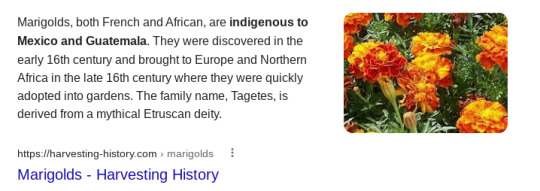
- Humans started in Eastern Africa by best guess.
- Horses is Asia, likely. Central Asia, though disputed on which culture came first: https://en.wikipedia.org/wiki/Botai_culture https://www.statelinetack.com/blog/the-history-of-horseback-riding/1595/
- Boats were invented by Phoenicians--who were not European.
If we’re getting later in history....
- Jane Austen discusses slavery during the Regency period. And Belle is roughly from the same time period (Movie about a black woman, who was a granddaughter of an Abolitionist judge based on historical figures).
- British occupation of India and Pakistan brought in Indians. One of the servants of Queen Victoria was an Indian man. She also had a black goddaughter.
- The Suffrage movement also included women of color, though rather erased from history.
- British colonization of Jamaica also brought in more black people. (Granted after Tolkien)

So the idea that looking at this map of Europe and Africa, no black people or PoCs would be in Europe is ridiculous, because Europe had a forcefield around it that prevented people from coming in. People always travel. I mean Queen Cleopatra, anyone? Anyone? She traveled from Egypt to Rome.
Homo Erectus made it all the way to China without airplanes, boats, horses, and suddenly Homo Sapiens sapiens can’t travel to Europe, just across a lake? That’s not realistic.
https://en.wikipedia.org/wiki/Peking_Man
https://www.newscientist.com/article/2150253-gene-study-shows-human-skin-tone-has-varied-for-900000-years/
https://www.quora.com/If-all-humans-belong-to-the-same-race-when-did-they-start-to-have-different-colours/answer/Walter-Smyth
But Tolkien WAS FOR WHITE PURITY:
https://www.good.is/articles/jrr-rolkien-nazi-letter
He hated the Nazis and if you read that article:
“Privately, according to “1937 The Hobbit or There and Back Again," Tolkien told Unwin he hated Nazi “race-doctrine" as “wholly pernicious and unscientific." He added he had many Jewish friends and was considering abandoning the idea of a German translation altogether.”
So no, he was not for “race purity”
I mean look at this burn:
25 July 1938 20 Northmoor Road, Oxford Dear Sirs, Thank you for your letter. I regret that I am not clear as to what you intend by arisch. I am not of Aryan extraction: that is Indo-Iranian; as far as I am aware none of my ancestors spoke Hindustani, Persian, Gypsy, or any related dialects. But if I am to understand that you are enquiring whether I am of Jewish origin, I can only reply that I regret that I appear to have no ancestors of that gifted people. My great-great-grandfather came to England in the eighteenth century from Germany: the main part of my descent is therefore purely English, and I am an English subject — which should be sufficient. I have been accustomed, nonetheless, to regard my German name with pride, and continued to do so throughout the period of the late regrettable war, in which I served in the English army. I cannot, however, forbear to comment that if impertinent and irrelevant inquiries of this sort are to become the rule in matters of literature, then the time is not far distant when a German name will no longer be a source of pride. Your enquiry is doubtless made in order to comply with the laws of your own country, but that this should be held to apply to the subjects of another state would be improper, even if it had (as it has not) any bearing whatsoever on the merits of my work or its sustainability for publication, of which you appear to have satisfied yourselves without reference to my Abstammung. I trust you will find this reply satisfactory, and remain yours faithfully, J. R. R. Tolkien
He also hated Hitler, a whole ton (and as cited in the article had a bunch of Jewish friends):
“I have in this War a burning private grudge—which would probably make me a better soldier at 49 than I was at 22: against that ruddy little ignoramus Adolf Hitler (for the odd thing about demonic inspiration and impetus is that it in no way enhances the purely intellectual stature: it chiefly affects the mere will). Ruining, perverting, misapplying, and making for ever accursed, that noble northern spirit, a supreme contribution to Europe, which I have ever loved, and tried to present in its true light.”--J.R.R. Tolkien, The Letters of J.R.R. Tolkien
https://www.goodreads.com/quotes/325144-i-have-in-this-war-a-burning-private-grudge-which-would
He also called Hitler a “Mongrel”:
https://www.facebook.com/GOODHQ/posts/jrr-tolkien-hated-nazi-race-doctrine-and-no-problem-telling-his-german-publishin/10157470976163059/
BTW, some suggest Moriquendi had dark skin.
Tolkien also refuted all claims of racial purity during his lifetime about his world:
https://en.wikipedia.org/wiki/Tolkien_and_race
So, no, he would hate you for acting like an incel neo-nazi.
In addition he often tried to update his worldbuilding to fit “science” seen here (BTW, this is the Victorian Literary movement called “realism”):
https://en.wikipedia.org/wiki/Round_World_version_of_the_Silmarillion
Since he wanted a round world, PoCs are required for it. Closer to the equator you would get PoCs. Plus it would screw over the Nazis really well to have all this info on humanoid populations. And I think he’d be for that. Despite the fantasy, he still liked the idea of rooting it in science and history, if you look into his writings (particularly about the foodstuffs)
I should note that CS Lewis, who was his friend and often had writerly disputes with him, was for a flat world model, which is probably some of the influence on the flat world idea.
BTW, I kinda like in a symmetry of mythology take, the idea that Valinor would be sucked into another realm in order to make the world round, which would solve a lot of his issues with making a round world. It fits a lot with the whole Valhala, Anglo-saxon, etc mythos he based it on.
And about the Harfoot in the show:

As I said, coded Rromani.
But Black Dwarves, caves, etc and auto-white skin
People forget that Inuit exist? (If not Rromani)

(Image from Encyclopedia Britannica) Where do they live? Far more North than the Latitude this is set.
If you’re arguing that Dwarves “need to be all white” then you should be arguing they are all albino https://www.insidescience.org/news/albino-sharks-deep), and more like mole people or naked molerats. But they have really good eyesight throughout LoTR, so apparently they aren’t “adapted” to the caves.
So that means they are getting all the essential vitamins in those caves, which has a tree and several green plants in Rings of Power.
They must be eating something similar to seal blubber or maybe the bones of fish and animals.
If that’s the case, such that they haven’t lost all their pigmentation, as in the case of Albino sharks, cited, then having a black dwarf isn’t far-fetched. As noted, the majority of the human population for quite some time was black, considering homo sapiens sapiens are 200,000 years old.
So humanoid creatures with an argued similar biology as they are trying to pull here, would stand to reason being black in a cave isn’t a disadvantage at all. And notice it took a few thousand years of agriculture for white skin even to be more common in Southern Europe.
The “realism” vs. fantasy--real problems.
Because they are going on about “realistic” but only harping on PoCs, I thought I would point out the more pressing world building issues they should have picked up on if they had any knowledge of actual European history and the whys of it all. Icing on the cake?

- In the middle of an icestorm, acting like a fighter, and hasn’t tied up her hair?
Loosely the clothes are somewhere between Preraphaelite, which is Victorian Imagination of clothes and 12th century clothing:

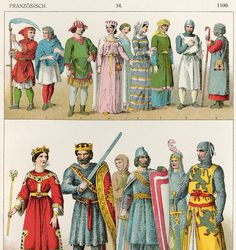
Actual 12th century clothing.
But you’ll notice in the real ones, the hair isn’t down like in the Victorian imagination of the Medieval period. The proper way was to cover ones hair. (Mostly to keep dirt off of it.)
Joan of Arc also cut her hair first thing: https://www.history.com/news/7-surprising-facts-about-joan-of-arc
So Galadriel with her hair down fighting people like she has it, would be a death sentence waiting for her. It would get caught in the chainmail hood, frozen to things, and blow around. It would get her killed. I don’t think Tolkien would be in favor of the impractical. It should be braided at least or put into a bun and probably covered, as shown above. Edit: They fixed this in Episode 6, by finally giving Galadriel a braid, BUT I was honestly thinking something more like this: https://www.howcast.com/videos/500081-how-to-do-a-heidi-braid-braid-hairstyles
Or a viking battle braid. https://therighthairstyles.com/viking-braid-tutorial/
- The clothes aren’t designed for horse riding:
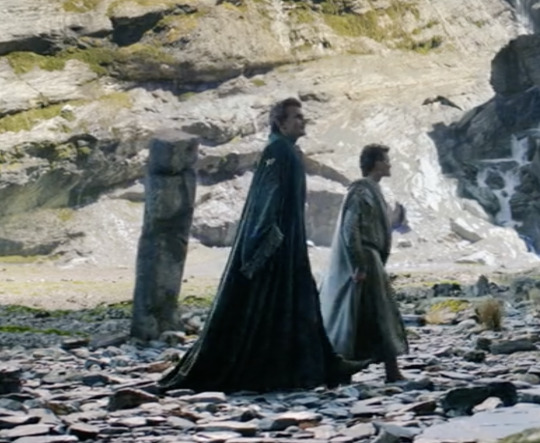
*sighs* Elves in LoTR habitually rode horses. Tolkien has large swaths about this.
And traveling in a robe like that in a distance like this:

No way that robe would stay that clean. It’s impractical. Often Kings through modern time would switch robes for riding. Riding in that clothing would be cumbersome. It doesn’t split in the right places, and it drags and it would collect dirt like no one’s business.
I don’t think that Tolkien, who went on and on about horses, would be in favor of clothes you can’t use for horse-riding when clearly horses are present. I mean even the Preraphaelite painting is more practical for horse riding than these clothes.
Yes, hand wavium with magic, but why not use an eagle or show that they magically appeared there (Which BTW, is a cheap effect) instead of the slow progress on the board? (Horses are expensive?) Still, the clothes need to be good for horseriding. Also, horses are not cars, so they’d probably have to stop along the way if it exceeds about 20 km. (’cause Tolkien is British), so the clothes would have to be changed. Note: Kinda fixed this later. A little. Starting in Episode 5, but I still think the clothing should keep in mind horses. Horses show up in episode 6, but are kinda mentioned before then.
Geography issues:
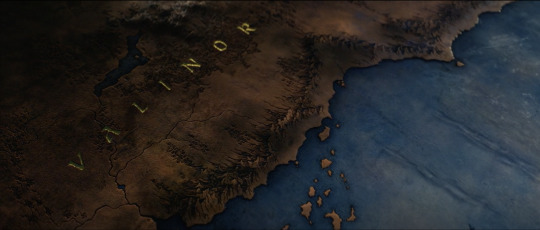
There is nothing on this part of the map which would make Middle Earth temperate in climate.
You see, the reason Europe gets to have agriculture besides the Beaker people is because there is the Gulf Stream, which throws all that warm water from the Gulf onto Europe. Without it, Europe would be, as my Geography teacher liked to say, “Siberia” And as he said, if you keep melting those icecaps, Europe will turn into Siberia’s climate, with really hot summers and really cold winters.
This isn’t part of Tolkien’s original map, so it’s not on him, but if we’re going by “realism” and “real history” and OMG, PoCs in Europe, shouldn’t the fact that Middle Earth be a barren wasteland without matching continent concern any of that crowd (yes, I know, white purists don’t really care about “real history” even when spouting it.)
BTW, some people lose their minds to find that agriculture+the Gulf Stream made them white. Downright angry. ‘cause then white people aren’t necessary in world building. But anything to piss off the white purists.
I should be clear, I’m willing to let these details go, and do hand wavium in my head, but really, if they are thinking Middle Earth is “real” history, shouldn’t they be more concerned about these three things than some scattered PoCs, most of which are not named? Five, first episode +2 second episode (only one of the two named). But no~ black people are “taking over” because of ~5 blacks in the first and +2 in the second. (And one of the two is on screen for less than a second--blink and you miss them). And I’m thinking, wait until they find out about the stone masons, Moors, Mongols, and West Asians in Europe. And Rromani.
Conclusion:
The thing is the majority of the people complaining are racists who want Europe to be a white haven of whiteness going back 10,000 years. They don’t really care that much about reality, in the end, and are basically doing the work of Hitler going on about White Purity of Europe and using Tolkien’s name in vain. But look, Tolkien was against that. He HATED Hitler. Hated him. Was willing to say so and have a hit put out against him. Was willing to give up German pub rights to hate Nazis. And Tolkien actively fought in his lifetime against Middle Earth being race-framed into being about white purity.
So I don’t get that.
25 notes
·
View notes
Text
ILLEGIBLE’S TOTALLY SUBJECTIVE FAVORITE EORZEA COLLECTION DESIGNS: MALE
I’ve mentioned in the past, the main thing that made me start playing FFXIV properly was seeing people’s character designs. I’m still honestly blown away by the creativity and range of approaches people bring to this game, so I’ve decided to be an absolute madwoman and break my favorites into subcategories to share with anyone curious.
And to be clear. I’m not going to do something so broad as “oh top ten in-general :3″ because that would be sensible. No, I’m going to do it for all the current combat jobs. And all the current races. And different genders within the races and combat jobs as things stand. And I’m going to make a model-focus subcategory. And there are gonna be LOTS. Because I seriously cannot understate how inspired I’ve been by this community, and after however many years I just feel the need to vomit some incredible visuals I’ve encountered at you guys lol.
NOTE: In an abundance of caution, I want to stress this list isn’t a value judgment on anyone but a fragment of things that blew me personally away. Looking at the DRK sections it will be immediately clear that I Illegible really like that edgy dark knight aesthetic lmao, but there are plenty of non-edgy dark knights that I also love to bits. Other people might not like edgy dark knights. Due to a combination of size and search constraints plus trying to keep gear somewhat varied, these glamours are just what wound up on this particular list of mine. I could make another list one day. Other people can make lists too that are totally different.
Also, I was originally going to make a single post that went over male and female options presented in the character creator but straight up tumblr wouldn’t let me save because it got too big. You can see the female character post here.
And without further ado, let us begin.
COMBAT JOB GLAMOURS
PALADIN
- A Sinner’s Call by Skollhati Wolfhead
- Divine Judgment by Seth Alexander
- Chevalier by Avenaux Dzemael
- Holy Blade of the Goddesses by Lys Aludra
- Metal Against the Clouds by Leon Aquitaine
- Spiky Paladin by Hunty Tohsaka
- Ishgardian Nightwatch by Leon Aquitaine
- The Centurion by Kaien Shimazu
- Veteran Knight by Jax Shadowbane
- Archadian Magister: Chaos, Walker of the Wheel by Callum Crossy
WARRIOR
- Coerthan Berserker by Xennon Song
- Skullrender by Xennon Song
- Red Maw by Remearus Maes
- Mistbeard’s Guardian by Galandor Atreides
- Ash Fender by Keiteaux Kisarre
- Wandering Beast by Jax Shadowbane
- Battle Worn by Lyrus Omega
- At The End Of All Things by Leon Aquitaine
- Demon Warrior by Ravian Ild
- Chieftain by Topher Kyo
DARK KNIGHT
- The Deepshadow by Erin Arckanger
- Nightmare of the Paragons by Papa Cool'down
- The Oathkeeper by Dividus Yliaster
- Deus Knight by Dan Var
- Rage Awakened Final Mix by Fortnite Ninja
- Bale by Xennon Song
- Vampire Baron Knight by Lud Wachtel
- Gothic Souls by Krosah Makara
- Lunarian Knight by Xennon Song
- The Descendent of Ascians by Skyion Skytiel
GUNBREAKER
- Soot-Scaled Striker by Callum Crossy
- Unbound Hecatonchires by Callum Crossy
- The Lone Gunbreaker by Sir Owl
- Alliance Commander by Nova Kie
- Gunblade of the Lost by Ludin Hreitharr
- The Filibreaker by Atticus Averbach
- Neo-Skallic Guardian by Leon Aquitaine
- A bulwark in brass and steam by Filibert Lilibert
- Plains Tribe Rite of Passage by Filibert Lilibert
- Spaceage cowboy by Phon Fawn
DRAGOON
- A Slumbering God’s Herald by Lud Wachtel
- The Elder Primals - Neath Dark Waters by Cassius Toledo
- The Occupied Drow City of Skalla by Leon Aquitaine
- Dravanian Viking by Sarafina Vadre
- The Wolf by J'roric Citlalloh
- Tribal Hrothgar Dragoon by Noxelus Virmire
- whitewind by Chiceneaux Selechant
- Edensguard by Kyo Ise
- Dragonblood Knight by Sylvaire Catrevaut
- Mercenary in Mixed Metals by Filibert Lilibert
SAMURAI
- The Dragon of Doma by Ky Tanimura
- Shadow of the Shifting Sands by Dai Tachibana
- Homura by Remearus Maes
- Monster Slayer by Kaien Shimazu
- Good Hunting by Remearus Maes
- Jury by Remearus Maes
- Ronin of the Steppe by Remearus Maes
- Dominicus Secutor by Remearus Maes
- Warg Samu by Fena Mizu
- White Dragon by The Solideizer
NINJA
- Armored Ninja by Ludger Magniar
- Desert Scar by Magnus Wolfwood
- Righteous Assassin by Lys Aludra
- Classic Shinobi Traditional Ninja Garb by Mog Champ
- White Dragon by King Resh
- Deadly Emissary by Lys Aludra
- night’s blessed by Chiceneaux Selechant
- Umbral Blade by Arik Nergui
- Ascianssin by Dragoon Scythe
- Wolf of Twelveswood by Punch Mage
MONK
- Fists of the Sun by Alois Lefleur
- Inner Beast by T'yan Ardeo
- Vathliege Samurai by Austen Bloodspatter
- Ala Mhigan Monk by D'jango Dojango
- Bozjan Brawler by Sahl Suh
- Liberator by Thriced Talon
- Flightless Hawk by Remearus Maes
- Firebrand by Lys Aludra
- Debugging in Process by Uskhal Dalamiq
- Falling Eagle by Feather Relanah
BARD
- Reaper-Inspired Bard by Flower Blossom
- Purest arrow by Lys Aludra
- Hunter of Lost Souls by Sahl Suh
- Bloodsinger by Lys Aludra
- Wanderer of the Past by Nyuki Dewinter
- Maelstrom Song by J'roric Citlalloh
- Sand Hunter by R'yo Aderyd
- Tactical Automaton by Lys Aludra
- Ballads of Azim Steppe by T'yan Ardeo
- Violet Archer by T'yan Ardeo
DANCER
- Flying Guillotine by Punch Mage
- Shadowed Step by Callum Crossy
- Rift Crusader by Onuki Saiga
- Prince Ali by Leisha Aysheen
- Battle Dancer by Ray Stormbringer
- Paglth’an Dancer by Vib'e Cheque
- Waterfall Adagio by T'yan Ardeo
- Memories of a Silhouette by Damien Cavalier
- Midnight Mint by Violet Wooden
- The Dancing Plague by Geraltus D'doritus
MACHINIST
- Fran - Chase by Goelia Sarantia
- Gunslinger by Lys Aludra
- Well-Stocked Sky Pirate by Sari Mogari
- Bozjan Ops by Ilium Lavendeer
- Wild Western Demon Hunter by Mori Sumire
- High Class, High Seas by Yannick Ostheimer
- Onmyo Bullet by Uskhal Dalamiq
- The Wanderer by Dividus Yliaster
- Wildfire by Lys Aludra
- Intrepid Expeditioner by Brazen Elk
BLACK MAGE
- Bohemian Mage by Darmoreaux Lestrange
- Bonewicca Cultist by Baruk Twinfang
- Chosen of Thal by Jophrey Lethe
- Abyssal Wizard by Jarvis Brakkenwork
- Summer Augurer by Uskhal Dalamiq
- the dark wizard by Eldar Claymore
- Masque of the Red Death by Junius Naenia
- Desert Cultist by Mayo Takoyaki
- Herald of the Zodiac - Geminis by Leisha Aysheen
- Herald of the Zodiac - Aries by Leisha Aysheen
SUMMONER
- Desert Emperor by Nilla Balthasva
- Arch Demon Summoner by Demnoc Crohn
- Verbatim by Twitch Prime
- Shinshoku by Callum Crossy
- The Fool by Bruno Brecher
- The Wandering Mage by Camilla Croft
- Gilded Evoker by Zionek Aurum
- Ensorceled Evoker by Haereidin Doeszwynsyn
- Dusk Groom by J'roric Citlalloh
- Deepwood wanderer by Lys Aludra
RED MAGE
- Vagabond Prince by Falion D'erenian
- Ronkan Cultist by J'roric Citlalloh
- Desert Scout by Frahn Loxner'et
- The Goblin King by Leon Aquitaine
- Summoned Guardian by Leon Aquitaine
- Eastern Red Mage by Red Grande
- Royal Rose by Zanel Slayer
- dual wielding swords by Kiraster Alroumi
- Steampunk Red Mage by Ry Tempester
- Reiterpallasch Hunter by J'roric Citlalloh
- Stroll in the snow by Riv'ir Gwyn
WHITE MAGE
- Winter Druid by Uskhal Dalamiq
- Herald of the Light by Kazek Amilia
- Desert White Mage by Iosen Juan
- Menphina’s Beloved by Puk'a Sweetfellow
- The Ill-fated Doctor by Charybdis K'reon
- The Doc by Denmo Mcstronghuge
- Minion Masquerade- Anima by Aetherflow Media
- cold front by Chiceneaux Selechant
- Secret Keeper by Feather Relanah
- Forest Mage by Sylviel Terrechant
SCHOLAR
- Studium Provost by Uskhal Dalamiq
- Field Medic by Seyo Senpai
- Stayin Classy Highlander Scholar by Aetherflow Media
- Writer of Fates by Olli Cannoli
- Secret of Nym by Nicky Tilmit
- Scholar of the Wilds by Sohk'yon Ayhan
- The First Cartographer by Edeon Vails
- Warg Sage by Ricola Tesla
- Dark Eastern Healer by Teru Nashira
- Sad Angel by Liam Gray
ASTROLOGIAN
- Jewel in the Sands by Vosric Oros
- Oracle of the East by Zyrus Highwind
- Golden Sun by Jarvis Brakkenwork
- Dalamiq Seer by Uskhal Dalamiq
- Misfortune Teller by Sahl Suh
- The Red Card by Yujin Seo
- Forgiven Soothsayer by Mongoose Mandolin
- Catharsis by Edeon Vails
- Proud Wave by Khurt Wagner
- Alpha Reticulii by R'yo Aderyd
BLUE MAGE
- King by Ray Fontelon
- Imposter Red Mage by Jarvis Brakkenwork
- Le Cirque Du Rosier by Callum Crossy
- Cobalt Enchanter by Tyo'li Wolndara
- Blubomb by Frahn Loxner'et
RACE GLAMOUR SPILLOVER
HYUR MIDANDER
- Faraam by Remearus Maes
- Gate Keeper by Remearus Maes
- The Guardian by Kizake Hayashi
- Mistbeard by Remearus Maes
- Blood Hunter by Lys Aludra
- Jiangshi by Dezel Windriders
- Alliance Salvager by Remearus Maes
- Edengrace Conqueror by Lys Aludra
- Bozjan Rampage by Xennon Song
- Northern Banneret by Lys Aludra
FAVORITE MODELS:
- Fists of the Sun by Alois Lefleur
- Ronin of the Steppe by Remearus Maes
- Armored Ninja by Ludger Magniar
- Vagabond Prince by Falion D'erenian
- Bloodsinger by Lys Aludra
HYUR HIGHLANDER
- From Darkness Comes Light by Niran Ashbel
- Black Wolf by Night Mazino
- Murderous School Bus by Night Mazino
- Desperado Breaker by Julies Solomon
- WW2 Pilot by Orillion Aldoreel
- Demon Hunter by Duffy Gelatoni
- Maelstrom Duelist by Roscoe Rackham
- Black Dragon by Lophen Leif
- Weathered Wanderer by Goro Yamaguchi
- Ravager by Night Mazino
FAVORITE MODELS:
- Jewel in the Sands by Vosric Oros
- Murderous School Bus by Night Mazino
- Desert White Mage by Iosen Juan
- Stayin Classy Highlander Scholar by Aetherflow Media
- Dravanian Viking by Sarafina Vadre
ELEZEN
- Lost Thief by Kaunoet Tyshatont
- Princely Protector by Liam Gray
- Cold Mornings, Warm Hearts by Leon Aquitaine
- I don’t know what a swash is but I’m buckling it by Raythe Ondore
- Peregrine by Yannick Ostheimer
- Obsidian and Blood by Leon Aquitaine
- Obsidian Gold by Arius Althea
- Purple Mage by Kaunoet Tyshatont
- Lord Archer by Mori Sumire
- Angel of Temperance by Agana Belea
FAVORITE MODELS:
- cold front by Chiceneaux Selechant
- Angel of Temperance by Agana Belea
- Lost Thief by Kaunoet Tyshatont
- Oracle of the East by Zyrus Highwind
- Ishgardian Nightwatch by Leon Aquitaine
LALAFELL
- Berserker by Munchkin Doofus
- Crimson Dragoon by Janaan Fabre
- Tiny Fist by Barca Ul'nanaca
- Chimera Dragoon by Janaan Fabre
- Royal n’ Loyal by Janaan Fabre
- Manor Estoqueur by Lia Tales
- Stargazer by Ikki Kohi
- Hazardous Caster by Astrancea Quasar'ae
- White Wolf Healer by Pickle Nibbler
- Bard of the Forest by Ryker Nightingale
FAVORITE MODELS:
- Stargazer by Ikki Kohi
- White Wolf Healer by Pickle Nibbler
- Well-Stocked Sky Pirate by Sari Mogari
- Tiny Fist by Barca Ul'nanaca
- Plains Tribe Rite of Passage by Filibert Lilibert
MIQO’TE
- Fran - Be Quiet by Goelia Sarantia
- The Assassin by Akira Tia
- Warrior of the Sands by U'zolwe Tia
- The Silencer by Grayson Foxworthy
- nemesis by M'rhene Tia
- Caecius by Callum Crossy
- The Imperial by Rein Drops
- Storm Duelist by K'aihx Nianh
- Cyber Mage by L'unick Tia
- T-53M: Omega by Lib'ra Jarilo
FAVORITE MODELS:
- Fran - Be Quiet by Goelia Sarantia
- Ala Mhigan Monk by D'jango Dojango
- Cobalt Enchanter by Tyo'li Wolndara
- Edensguard by Kyo Ise
- Maelstrom Song by J'roric Citlalloh
ROEGADYN
- Sin Eater Forgiven Wrath by Arkhon Dullgaroth
- Platebreaker by Biggus Dickkus
- Berzerker Warrior by Cata Clysm
- Dravanian Shadow Knight by Galandor Atreides
- Santa Claus by Aetherflow Media
- Knight of the East by Galandor Atreides
- Roegadyn Samurai by Raiden Hagane
- The Real Barbarian by Milla Lariswind
- The Discipulus by Haereidin Doeszwynsyn
- Cactpot Crackpot by Kaemin Moore
FAVORITE MODELS:
- Knight of the East by Galandor Atreides
- Flying Guillotine by Punch Mage
- The Fool by Bruno Brecher
- Battle Claus by Bard Bro
- The Real Barbarian by Milla Lariswind
AU RA
- Fatewalker by Kaien Shimazu
- Combat Casual by Arik Nergui
- Suzaku’s Champion by Uskhal Dalamiq
- Herald of the Zodiac - Taurus by Leisha Aysheen
- The Anti-Paladin by Bastion Blackwater
- Zero by Ace Valstra'liah
- Elegant Duelist by Yoni Neel
- Herald of the Zodiac - Pisces by Leisha Aysheen
- Valkyrie by Rogan Hunter
- Devout of the Sun by Uskhal Dalamiq
FAVORITE MODELS:
- Herald of the Zodiac - Pisces by Leisha Aysheen
- Combat Casual by Arik Nergui
- Samurai of Alexander by Ky Tanimura
- Winter Druid by Uskhal Dalamiq
- Herald of the Zodiac - Geminis by Leisha Aysheen
HROTHGAR
- Snowfall by Ese Pajic
- Heavy by Radio Jackun
- Defender of the Forest by Hana Kagura
- Risen Dynasty by Zeth Xerval
- Forgiven Pride by Yoshi Pendragon
- Queen’s Guard by Sahl Suh
- Lord of Umbral Pyre by Stahlhart Vahn'reiz
- Jade Maw by Shin Okusawa
- Einherjar by Baruk Twinfang
- The Exorcist by Haereidin Doeszwynsyn
FAVORITE MODELS:
- Heavy by Radio Jackun
- Tribal Hrothgar Dragoon by Noxelus Virmire
- Gunblade of the Lost by Ludin Hreitharr
- Desert Scar by Magnus Wolfwood
- Risen Dynasty by Zeth Xerval
20 notes
·
View notes
Text
12 Favorite Superhero movies
So there is this weird backlash to superheroes ,that I dont get.That could be because I love superheroes and as such wanted to highlight some of my favorite Superhero movies
1.Superman The Movie and Superman II
These movies were the first attempt to approach a comic book relatively seriously ,though still maintaining a sense of humor .I kind of view them as one big movie,the first half being the orgin story and setting up the key characters,while the second half explores them .and places a great threat against them in the form of the Kryptonian Criminals .I flip flop on which one I prefer,as Superman the Movie is more solid but Superman II is more fun,and overall I love both movies so why not give them the same spot .The cast is pretty spot on ,the villains are great in both films ,they tell the tale of Superman well and capture the wonder and whimsy I associate with him

2.Batman
When I was a kid the Batman movies were the definitive superhero movies,and while I personally love Batman returns,the best of them has to be the original Batman .While it’s not the best adaptation of Batman as it changes a lot (Batman kills,Batman and Joker are connected, we know Jokers backstory,etc )I think what Tim Burton captures is the feel of Batman ,with the gothic atmosphere of Gotham ,and the brooding Batman in conflict with the loud and colorful Joker .Apart from the aesthetics and Danny Elfmans score,Jack Nicholsons take on the Joker is really the highlight
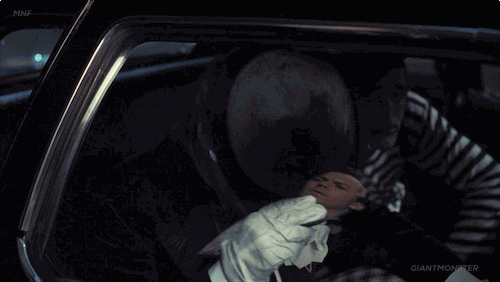
3.The Captain America Trilogy
I love all three films in the trilogy ,I couldnt pick one.The First Avenger is a great tribute to the Golden age of comics ,Winter Soldier is a spy thriller that explores interesting ideas and Civil War sets our heroes against eachother ,for both political and personal reasons .I like all three for diffrent reasons,but I think it is just a very solid trilogy with my favorite character in the MCU
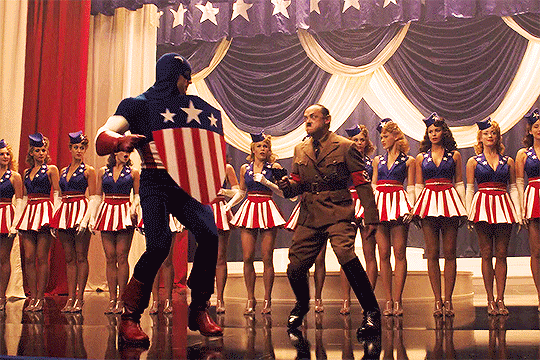
4.Wonder Woman
So I love a good super hero period piece .I saw this film when I was having a real bad day ,and It brightened my day .Diana is such a hopeful character ,and setting her against the gloomy backdrop of WWI was brillaint.The supporting cast is fun ,Wonder Woman herself is a great lead and the battle in No Mans Land is fantastic

5.The Crow
My favorit movie based on a comic book .A story of grief and revenge. It is darker then most superhero fare that you kind of forget it is one ,heck I have seen people argue its more of a horror film ,but I’d say it’s a gothic superhero film,with our undead hero returning from the grave to take vengence on the criminals responsible for his and his fiance’s death.We have a costumed hero,a rather theatrical supervillain in the form of the crimelord Top Dollar ,and elements of the supernatural.This film is just cool,the soundtrack,the look,the action,the hero and villain are just so cool to me

6.The Mask of Zorro
Film was cool when I was young but even cooler now that I am older.It is the tale of Zorro having escaped prision training a successor,it’s basically Batman Beyond BEFORE Batman Beyond.It has AMAZING fight scenes ,the romance is amazing ,it’s really funny ,and it’s just a cool update of Zorro
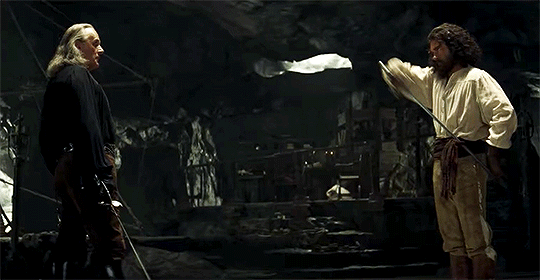
7.Logan
Hugh Jackman had an interesting 17 year journey as Wolverine and goes out with a hell of a bang .It’s almost a western,with Logan and Professor X having to go on a journey with this mysterious child.This is a brutal film,in terms of both violence and emotions,with fantastic performances by Hugh Jackman,Patrick Stewart ,Daphnee Keen and Stephen Merchant ,a pretty good villain in the form of Boyd Holbrook as Donald Pierce and is a good finale for the Wolverine character

8.Spider-man Into the Spider-verse
The best Spider-man movie .It focuses on Miles Morales,as he must take up the mantle of Spider-man ,learn to control his powers, help Spider-people from other dimensions go back home and save reality from the Kingpin .The animation is gorgeous ,the story is great,the characters are fun (Especially Nicholas Cage as Spider-Man Noir ) and it is very emotional

9.Batman the Movie
I LOVE THIS MOVIE .It is legit one of my favorite Batman movies,and a solid Silver Age romp with Batman and Robin fighting against their four arch enemies :Penguin,Catwoman,Riddler and Joker .We get a romance between Bruce Wayne and Catwoman that is oddly sad ,Penguin is the big bad (Which is refreshing cause normally Joker would take that role ),and a lot of funny moments including the immortal”Some days you just cant get rid of a bomb”
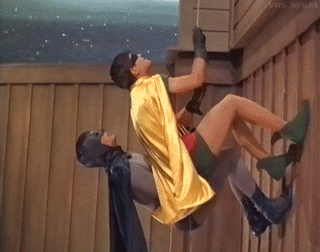
10.Avengers Infinity War and Avengers Endgame
The two part epic is a finale of sorts for the MCU ,at least of the Avengers saga which started with Iron Man.We have an intriguing villain in the form of the Mad Titan, Thanos,great action,heartbreak ,and just a grand scale ,these movies feel BIG

11.Batman Mask of the Phantasm
Probabbly my favorite Batman movie,that is both a mystery with a mysterious killer targeting gangsters and a peak into Batmans past ,of the life he couldve lead .This film is all about Batman’s struggle with identity ,and is a terrific tragedy .

12.The Mark of Zorro
So I may be cheating here,as Diego is actually not Zorro all that much in this movie,but I think it counts.I adore this movie ,showing really how cunning Zorro is ,seeming to just be a rich idiot but making a fool out of his foes ,.Plus it has one of the best fight scenes of any movie ever,as the sword fight against Diego and Captain Pasquale is truly epic

@cinefantastiquemitho @filmcityworld1 @inevermetapenguinididntlike
#the mark of zorro#the mask of zorro#batman#batman the movie#batman mask of the phantasm#superman the movie#spider-man: into the spider-verse#avengers infinity war#captain america: the first avenger#the crow#wonder woman#logan
31 notes
·
View notes
Text
Week 15
The term Gothic is applied primarily to the art produced in Western Europe form about the middle of the twelfth century in France to the sixteenth century in other parts of Europe. In the book A History of Western Art, chapter 13, you see that much of Gothic art is architecture. Gothic cathedrals are among the greatest and most elaborate monuments in stone. There are many things that make Gothic art unique and magnificent. There are also many different kinds of Gothic art which include French, English, and German Gothic art.
Gothic art has many elements that make it unique and beautiful. These elements include rib vaults, piers, flying buttresses, pointed arches, the skeleton, and stained-glass windows. Rib vaults replace the earlier barrel vaults of Romanesque. The rib vault requires less buttressing. Also, the weight of the rib vault is concentrated only at corners of the bay so the structure can be buttressed at intervals freeing more space for windows. Rib vaults are kind of like the roofs of buildings or beams that hold up the roofs; they are in pointed to round form. Piers are the supports for vaults. They are large columnar supports on either side of the nave to which clusters of colonnettes (small, slender column) are attached. So in simpler words, they are beams from the vault down to the ground to support the vault and roof. Flying buttresses is an exterior structure composed of thin half-arches. Pointed arches are an essential feature of Gothic architecture. Pointed arches can theoretically be raised to any height regardless of the distance between their supports. The skeleton, also known as the skeletal structure, is the name for the ribs, piers, and buttresses together. The last element, and most interesting in my opinion, is the stained-glass windows. Stained-glass windows filter light through colored fragments of glass. It is translucent colored glass cut to form a window design. The most predominant colors of Gothic stained glass are blue and red which contrast to the golds that character8ze most Byzantine mosaics.
The French Gothic style is amazing to see. The height and luminosity were the criteria by which they were measured. One French Gothic style building I found the most beautiful was the West Façade built in Reims, northeast of Paris, France. This build is 125 feet high. The window space has been dramatically increased as a result of continual improvements in the buttressing system. This cathedral also has remarkably beautiful stained-glass windows. The colors are incredible. I think this architecture is absolutely amazing. I really like this building because of how tall and big it is, how much window space there is, the beautiful stained-glass windows, and how many points and vaults there are.
The English Gothic style art is also very amazing to see. England was the first to adopt the Gothic style once it spread beyond France. One architecture building of the English Gothic style that I really liked was the Salisbury Cathedral. One thing that defines English Gothic from French Gothic is that English Gothic chapter house (meeting place for the discussion for business in a cathedral or monastery) is octagonal. Also, there are fewer stained-glass windows than in the French Gothic style.
The last kind of Gothic art is the German Gothic art. One cathedral I thought was intriguing was the Cologne Cathedral. This cathedral is the biggest in Germany. The towers are 515 feet high. This cathedral has a dramatic upward movement of the interior as well as the elegant patters created by the vertical regularity of piers, vaults, and windows. I really liked this cathedral because of how tall and narrower it is. I also like how many points there are, and how the points have marks on them so it kind of looks like the building has texture.
I think Gothic art is absolutely beautiful and unique. I love how Gothic art has many ribs, piers, points, and stained-glass windows. I also loved seeing the different kinds of Gothic art when it spread. I think that Gothic cathedrals are absolutely stunning with all of their amazing elements.
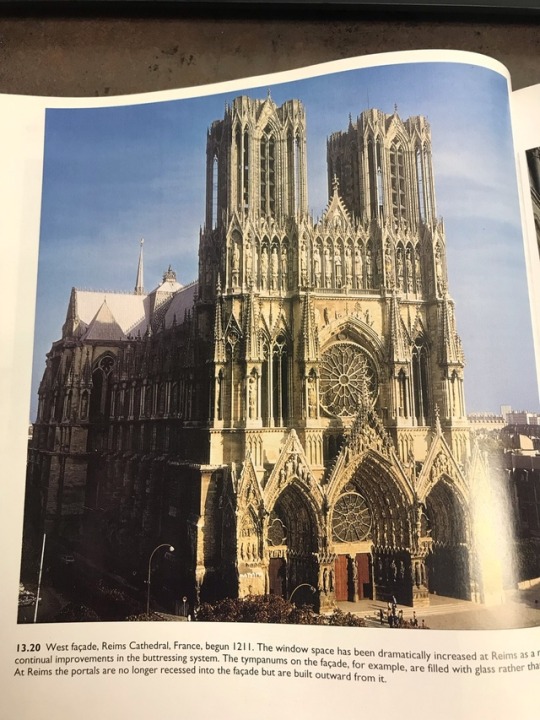


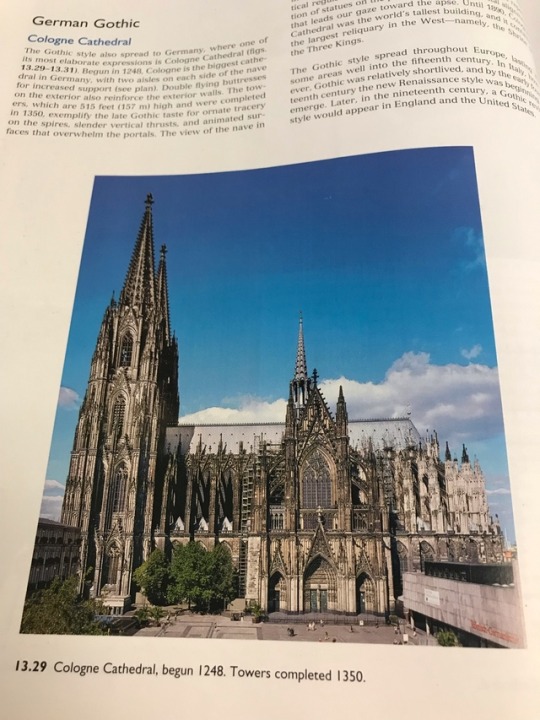
2 notes
·
View notes
Text
Blog Post 16
The term Gothic is applied to art that was produced in Western Europe for the twelfth century through the sixteenth century in France and Europe. When I think of Gothic art, I think of stone sculptures and dark paintings. I was surprised that this chapter didn’t have many paintings or murals. It was basically all sculptures and buildings. The person who invented Gothic art is Abbot Suger. Suger made buildings unique by putting Gothic architecture in them. There were main elements in the making of Gothic architecture. Each building that was built in this period had: rib vaults, piers, flying buttresses, pointed arches, the skeleton and stained-glass windows. The rib vaults make less pressure around the building and makes more space to add windows. Piers are the support of the buildings. Compound piers were a mandatory object in Gothic architecture. I had no idea that Gothic architecture buildings used stained-glass windows. Abbot Suger thought that these buildings needed more light, so the stained-glass windows came into this period. The main colors in the Gothic art stained-glass windows were blue and red. It amazes me how stained-glass windows are made. It starts out as translucent colored glass. The translucent glass is formed together by colored glass. Once the glass makes a picture, it is framed by an iron armature.
Most of Gothic architecture is inspired by the Romanesque period. Abbot Suger turned more of his attention to churches after Saint-Denis. One of the biggest achievements of Gothic architecture was the construction of a cathedral. By building this cathedral, the economy grew significantly. It gave jobs for many people. These jobs include masons, carpenters, sculptors, stonecutters, and other craftsman jobs. It helped the community come together or activities and religious opportunities.
The main town of Gothic art would be Chartres. Chartres grew as a city when a cathedral was built. The cathedral was called the Chartres Cathedral. Chartres had vertical towers that elevated its appearance. When building this cathedral, the builders wanted it to be seen since it is at an elevated site. Throughout the cathedral, there is stained-glass lancet windows. This feature was in all Gothic cathedral entrance walls. I liked learning about the exterior sculptures of the Chartres cathedral. I think this cathedral is the most detailed and unique building that I have seen. It had three doors which were unique to any other building this chapter. The kings and queens were above the three outside doors. I liked how there were sculptures of saints around the three doors. The saints are very detailed and look real. I thought it was a clever idea to put the saint’s sculptures right by the door. It would feel like they were looking over you while walking into the cathedral. The ceiling was 120 feet high making it look more grand inside. I wish these cathedrals were still around, so we could see them today. I really liked reading this chapter. I was surprised how beautiful and well-designed this cathedral was. I was glad this was the chapter we ended on.
4 notes
·
View notes
Text
The Harboson Chronicles; Now Recruiting.
Hello, hello folks! Yes, yes it is true - the Harboson Company is turning into a ‘house’ of sorts through a long-term storyline. We’ve been gathering land, resources, and the support of various respected Noble Houses to advance forward with our storyline; so why the change? Well, let's get into it!

1. What is the difference between the Harboson Company and the Harboson Chronicles?
An excellent question; the primary thing is that the Company isn’t the main focus anymore - rather more of a side product. We still own our storefront, we’re still running the trade routes, running the GSC, etc, etc. Now, the Harboson Chronicles will be focused on Politics, Intrigue, Strategy/Tactics, IC Growth, Wargames, and Land-Management. If you’re familiar, think Crusader Kings but with your friends, Azeroth as the theme, and more in-depth character progression.
In addition, the Harboson Chronicles is made up of more than one guild. We intend to partner with any and all interested in this new direction. One does not have to join the guild to be involved, but all those involved will be required to follow the same rules and act as decent human beings.
2. So, what’s to be expected if we decide to sign up with you?
There are three separate paths to be included within the guild. A Knight-Inspired path, a Mercenary path, and Partisan path. That being said there are a series of Noble Families with different cultures/customs to sign up with - all the current Noble Families are vassals, or loyal to the Harboson Family. So, one Noble Family might have more of a Gypsy-ish culture focused on trade and exploration, while another might be more Scandinavian-ish focused on raiding and warfare.
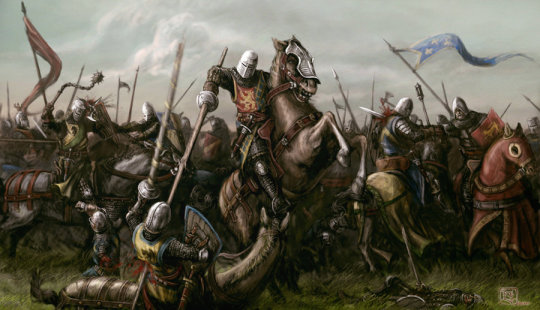
The ‘Knight’ path will require one to start as a ‘Squire’ sworn to an already established Knight. The Squires will of course be trained in warfare, tactics, politics and so forth; while generally aiding the Knight in their day to day task. Life in general will vary depending on which Knight you decide to swear yourself to as people will have different values and customs depending on their House. After you’ve proven yourself, your Knight or Lord may grant you some land in which case, you will become a Knight.
The Knightly Path primary consist of politics, intrigue, engaging in battles, and in general trying to expand your influence/wealth/land.

The Mercenary Path is primarily focused on combat-only and suggested for those that won’t be able to be on as often. Folks within the Mercenary Path will be here in a more casual setting generally speaking, hopping on to aid in combat events, get paid and then head off; though not necessary. With time, a Mercenary can be granted the role of Captain, taking on a series of Mercenaries under their wing - increasing their own pay as well. Mercenaries will not be typically be awarded lands.
The Mercenary Path can be used as a trial/introduction rank until you’ve made your decision to stay or leave - a Mercenary can be allowed to become a Squire as a long as a Knight is willing to take them in.
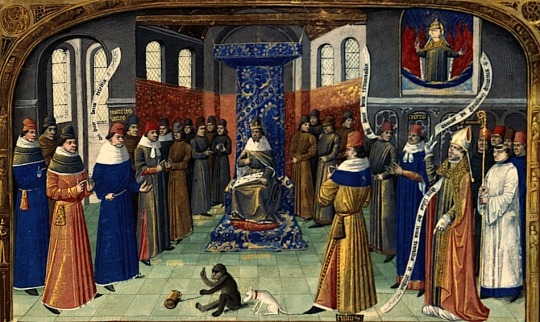
The Partisan Path is not focused on things like blacksmithing and the like, but more on the Noble-Court roles fulfilled by non-Nobles. Such as Stewards, Viceroys, and so forth. Partisan roles are typically things of management, business, and intrigue. Trying to maintain your position and grow your influence while the Nobles squabble over one another. A Partisan Role can be anything from a servant to the Viceroy of the entire Harboson Company; undoubtedly a potentially powerful route.
Partner guilds will be able to generally structure however they choose to; though strictly OOCly rank titles such as Count, Duke, and King will remain for ease of OOC understanding. For example, someone titled ICly as “Matriarch” would OOCly be listed as a Queen/King.
3. The chance to win land? Sounds too good to be true.
Not at all, that is the primary resource of reward really. The whole point is to follow along with a Feudal-Style system complete with ‘Counts’, ‘Dukes’, ‘Grand Dukes’, and even ‘Kings’ though these are all just OOC ranks designed for simplicity and ease to follow. It’s rather simple once you think about it. A Count runs a County, several Counts work under a Duke who owns a Duchy that typically consist of several county-sized territories. A Grand Duke runs a Grand Duchy, which has two Dukes/Duchies, and upwards of six Counts/Counties.
(Please note; ranks such as Count to King/Queen are considered OOC Ranks used to detail general power for ease of understanding. ICly there can be no one with a real title of King/Queen or higher.)
The beauty of the system is one does not have to be good at politics or intrigue to do well; simply serving your Lord or impressing the right people can grant you more land. More land means more resources, more resources means more units for combat. On the other spectrum, a person that is piss-poor at combat can be incredibly sneaky - making alliances and deals, trying to forge land deeds, so on and so forth to gain land in a less direct way.
Upon gaining a certain amount of land and becoming a County you can name your County, describe your culture in as much detail as you’d like - IE: “Western European, Traditional Knights. -- Holy Roman/Gothic styled armor and weaponry. -- Eastern European, light armors, heavy weapons.” Etc, etc -- and if you’d like, even make a family crest and flag for your county using a heraldic system. At that point, you’ll be able to make a lot of choices that’ll affect your county. IE, you can choose to focus on growing your food stocks, focus to train more soldiers, focus on making the best weapons possible, focus on making gold, etc, etc.
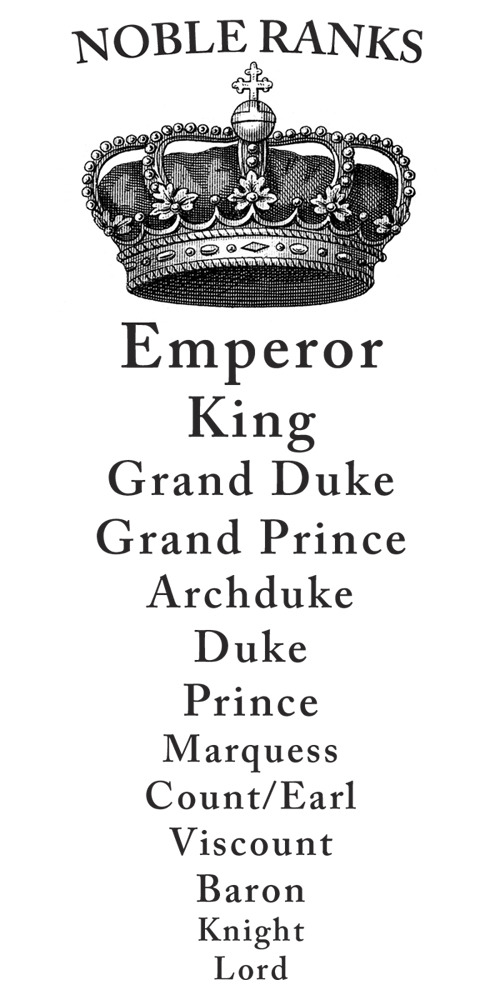
4. This sounds like a lot... It seems complicated.
TLDR: We promise it isn’t really. I do not like math, and I do not like homework so I made management as meaningful as possible with the least amount of math and work possible.
On paper, it is - yes. In reality, and once you start getting into it and roleplaying with it - not at all. It typically seems to flow naturally and gives you feeling of what a King back in the day likely felt like. Do you trust that your Allies will come and aid you when your arch rival comes to attack your lands? Or in your paranoia will you rely on your soldiers, constantly drilling them potentially to the point of exhaustion. Do you want to have a smaller elite team of Soldiers, or are you going to attempt to use horde tactics and swarm the enemy with superior numbers? Perhaps you’ll focus on technology like cannons and rifles over the more traditional Knights and Footmen. The choice is up to you.
If you like tactics, even just a little this system will likely be a lot of fun for you - but if you have no interest in even the smallest bits of tactics, politics, or intrigue - then the Mercenary Path is for you; engage in our fun combat-oriented events and still be engaged in the story.
5. You can’t own land.
Ah, that’s weird because I kind of do. But fret not, the land we’re using while based in Azeroth have no exact location nor particular position in which we’ll constantly be flooding and claiming ‘you can’t roleplay here, because this is ours.’
The most detailed one should ICly get is “I own some/lots land in Redridge.”
6. Ahaha, calling yourself a King seems like a quick way to be called a traitor and executed.
TLDR: There will be no IC titles equal to that of a king/queen. Anyone called a King/Queen is done in an OOC sense to easily distinguish ranks.
Typically, yes - but the term is used OOCly for ease of understanding ranks and chain of command; even though by all technical means the ‘King of Stormwind’ is actually an Emperor considering they own several Kingdoms; in reality it wouldn’t be uncommon for there to be several Kings under said emperor - but that’s just plucking at straws. So, for example my character may be the OOC rank of a Grand Duke. with 2 Dukes Under him, and a total of say 12 Counts. But, ICly, I may refer to myself still as Patrician (A more accurate term anyway.)

7. Idk, it seems too ambitious - I’ve seen groups try to do Kingdom RP before.
Ambitious is a rough term, especially since it’s something we’ve been doing amongst ourselves for an extended period now with a series of other organizations and guilds through Discord. (Which we will continue to use as well.) This is not an announcement stating we are ‘trying’ this, this is an invitation stating ‘Hey, we’re doing this. We’re having a good time, you’re welcome to join us.’ And yes, others have done (And are still doing.) styles of roleplay ‘like’ this... Though nowhere near as structured I’d argue.
8. I have seen this before; you just want to control things. This is just a power play!
While I understand your concern all too well, I will have to disagree with you strongly. We are not here to rule over other groups, we will not be prewriting stories or the outcomes. (except for maybe, you know, agreed upon storylines with agreed upon results.) We are here for one simple purpose; having fun. One thing many of us enjoy but can rarely get at a satisfactory level without a butt-load of OOC drama is Politics, Intrigue, and War. We are here as an OOC collective working together with the goal of not winning at a board game, but rather having a good time with all those present. There are rules and limitations in place that add a sense of realism, immersion, and balance that will prevent a lot of potentially upsetting happenings. (Ie, someone steamrolling through all the groups in a day.) We just want to have fun, and more over we want you to have fun.
So fear not, if you want politics, intrigue, strategy, wargames - or just want to give it a shot, give it a try.
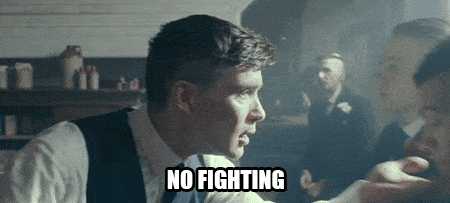
----------
All in all, we’re extending a hand to folks that think they’d like to be involved. Rather you want an immersive experience as a Knight/Squire/Mercenary, want to be involved in intrigue and politics, or you think you’d really enjoy our detailed wargame system involving several guilds and actual players rather than just NPCs, and on top of it all enjoy solid storylines then this is something you’ll want to look into my dudes. Leave a message on the post, send us a message on Tumblr, or contact Elstine or Quiinn in-game. Reblogs are appreciated.
@risrielthron @the-news-nerd @percy-dewdancer @addressroleplays @bath-ironstout @demetrius-devereaux @aventinefarms @intoxication-wra @penvenomstarkstar
#Recruitment#Advertisement#Advertise#Harboson#Wargames#RP#Roleplay#WrA#Wyrmrest Accord#Politics#Intrigue#Combat#Discord RP#Management
50 notes
·
View notes
Photo
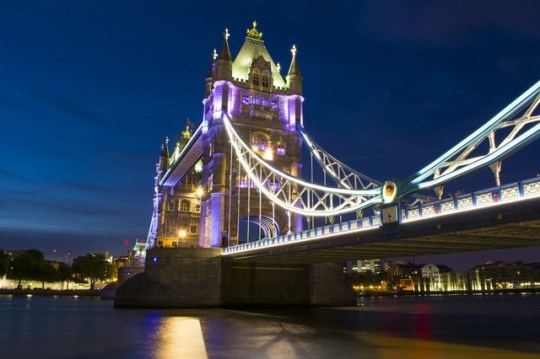
My trip to London
This is a story about my trip to London. It was around Christmas time, I decided to go on a seven days long trip to London. I was really excited, and I had planned to visit a lot of places.
When I arrived at the airport, the sun was shining and the landscape around me was covered with snow. The first thing I was going to do was to take a bus to my hotel. A few weeks before I went on my trip, I had found a London Pass on the internet that cost about £42 pounds for seven days. It was necessary to have if I was going to travel by bus or underground. It also made some of the sightseeing and attractions I was going to visit a little less expensive. With the pass I was also given a guidebook where I could find out how to get to each attraction, open hours, and location on the map. After I had picked up my luggage I got on the bus that would take me to the hotel. I had found a really nice hotel called “The Sumner Hotel” which was located in the middle of London on 54 Upper Berkeley Street. It was only a two minutes walk from the hotel to the tube station, Marble Arch. The Sumner Hotel is a historic building, recently renovated with facilities like: credit card accepting, safety deposit box available 24 hours, tourist information, mini fridge, wireless internet connection, hairdryer in room, air condition, heating and also a lounge bar for relaxing with a drink after a long day’s walking. Each night stay at the hotel cost about £145. It is quite expensive, but most of the hotels in this area cost about that much.
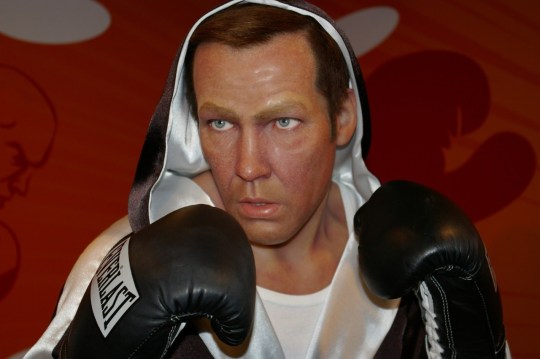
Madame Tussauds!
I unpacked my luggage and decided to start my week in London with one of the most famous tourist attractions, Madame Tussauds! It was only a ten minutes walk away from the hotel. I had pre-booked a ticket at home so I didn’t have to wait in long lines to get in. The cabinet has about four hundred dolls today, and it was very fun to see the new music zone with artists like: Justin Timberlake, Robbie Williams, Christina Aguilera and Britney Spears. I also enjoyed the amazing figures of the Pirates of the Caribbean actors like Johnny Depp, Orlando Bloom and Keira Knightley. I had a wonderful time.
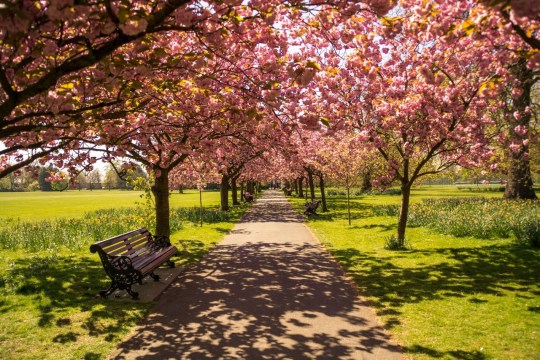
Hyde Park
After Madame Tussauds I had a quick lunch, and then I felt like doing an outdoor activity, so I took a walk in Hyde Park. It’s a huge park which has been open to the public since 1637. Before that it was owned by kings for deer hunting and so on. From the very beginning it was owned by the monks of Westminster Abbey, but it was given to Henry VIII in 1536. Anyway, as I was walking around in Hyde Park, I got to Speakers Corner. It’s a place where people are allowed to do public speaking, and you can almost say whatever you like without getting caught. The only things you’re not aloud to speak about are the British Government and the Royal Family.
I left Hyde Park after a lovely couple of hours in the beautiful area and the well-spoken Speakers Corner. I was going to finish the day with a nice dinner and then visit the famous musical, Phantom of the Opera. The musical is played at Her Majesty’s Theatre in Westminster and is a musical based on the novel written by Gaston Leroux, who was a French novelist. Andrew Lloyd Webber is the composer of the music.
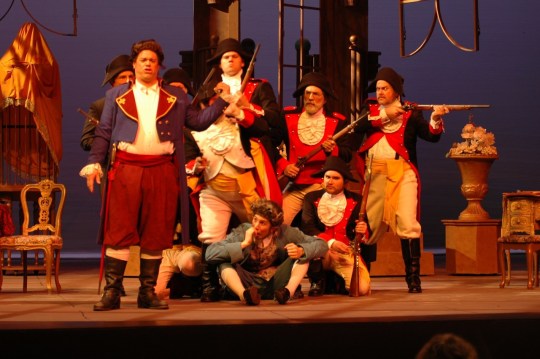
Opera ghost musical
The musical is about an opera ghost (the Phantom) with a deformed face. He is unlucky and very much in love with one of the chorus girls whom he taught to sing. He even kidnaps her at one time to hide and marry her.
It was a very thrilling and exciting story when the phantom terrorised the actors and workers at the opera house in Paris (that’s where the story took place). I enjoyed it very much and the music was absolutely fantastic. It was a perfect end of my first day in London.
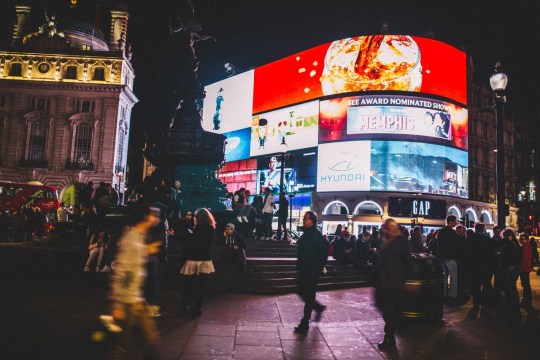
Piccadilly Circus
The next morning after a very delicious breakfast buffet, I was heading towards Piccadilly Circus, which is situated approximately fifteen minutes walk away from the hotel. Piccadilly Circus is a big square located in the centre of London. It used to be an attractive place for companies to advertise, often in neon lights. Today it’s only one of the many buildings that are available for advertising. In the south western part of the square there is fountain called “The Shaftesbury Memorial Fountain” It was built in 1893. I went into the Lilywhites, a five floors big building, and it’s one of the biggest sport stores in England. It was incredibly big!
After a lunch at one of the restaurants at Piccadilly Circus, I went to visit the Buckingham Palace. I placed myself at the forecourt to watch the changing of the guards. Then I took a guided tour through the “Queens Galley” where I could see the art and jewellery collections.
Theatre of St Martin
Since I had been walking all day long, I looked forward to sit down and watch the famous play, The Mousetrap. I took the tube to West end where the theatre of St Martin’s is situated. I have heard that it is the longest running show of any kind in the whole world; it has been played for the past 52 years. It is written by Agatha Christie, who was one of the greatest crime writers. So I just had to see it. I finished the evening with a great dinner back at the hotel and then I went straight to bed.
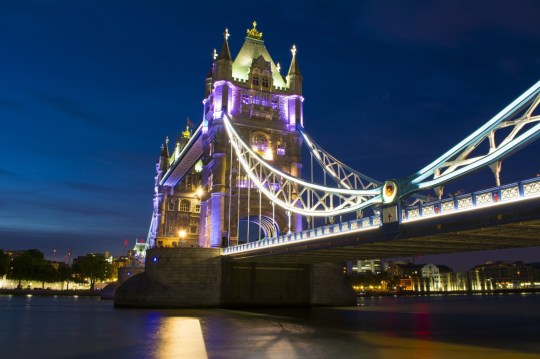
Tower of London
The morning after I woke up early and had a quick breakfast, then I went to the underground station. I was on my way to the Tower of London. I was in a little bit of a hurry to get there in time for my guided tour through the tower. I had heard that the guides were beefeaters and that they told the nine hundred years old story about the castle. I jumped of the tube at Tower Hill station, where the tower is closely situated.
It was going to be very exciting to listen to the horror stories about executions at the castle with the nickname “The Bloody Tower”. Close to the Tower of London, is the Tower Bridge, and for all people who had a London pass, the Tower Bridge exhibition was free of charge. The exhibition took place in one of the two towers, and there was also a museum. The view from the bridge was one of the most beautiful I had ever seen. I could almost see the whole city of London. In the afternoon I visited the big department store Harrods, which is situated in Knightsbridge. This famous department store was built in 1849 and it is over 160 years old. It started out as a grocery store. Today there are more than five thousand people working at Harrods. It is a very expensive store, so I didn’t buy anything, even though you could find everything here. After a couple of hours wandering around in the huge store, I took the tube back to the hotel. I was very exhausted and my legs were tired so I fell asleep quite soon.
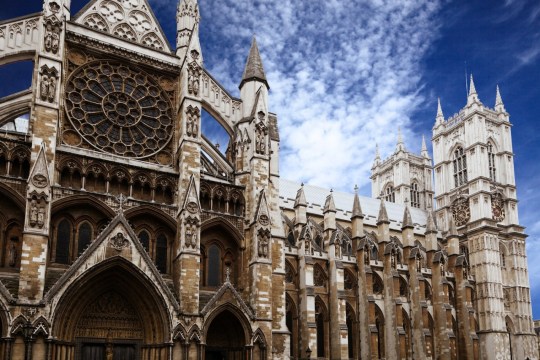
The old gothic church
The following morning I woke up, had my breakfast, and then I got to the tube station. I was going to visit Westminster Abbey, which is a nine hundred years old gothic church in London. Its proper name is The Collegiate Church of St. Peter, but it’s more often called Westminster Abbey. It s situated in the heart of London, next to Parliament Square and opposite the House of Parliament. At eleven o’clock, I went on a tour through the church. The guide was informing about the history of Westminster Abbey while he showed us around. We went to the Library and Muniment Room houses and saw all of the very important collections that belonged to Dean and Chapter of Westminster.
After a couple of very nice and interesting hours I went to eat lunch at a restaurant located not so far from the church. During the afternoon, I went on the Jubilee line to see the Millennium Dome. It is an arena in London which opened in December 1999, and after that it has been open to the general public during the whole of the year 2000. The Dome has the largest coherent roof in the world and it is among other things connected by twelve supporting towers that represents the twelve months of the year. It really is a huge arena, and it is nice to have seen it.
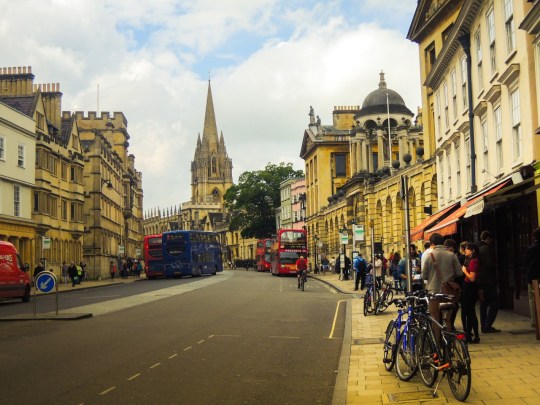
Millennium Dome and the Oxford Street
Later in the evening after visiting the Millennium Dome, I took the tube to Oxford Street. Oxford Street is a one and a half mile long shopping street, and it claims to be the busiest street in Europe. It has got hundreds of shops and big department stores. Some of the best-known are: Selfridges, Marks & Spencer and John Lewis. The biggest department stores are about seven floors high. The street begins at Marble Arch and ends at Tottenham Court Road. At Oxford Street you can find all kinds of shops. It’s the major shopping street in central London, but it’s not the most expensive or fashionable. I bought a lot of presents to bring home to my family.
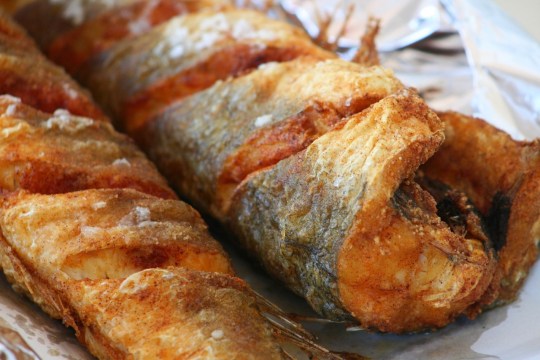
Fish and Chips
It was amazing to walk down the street that I had heard and read so much about. I finished the day with a famous fast-food dinner, Fish and Chips. Then I walked home to the hotel (which was only two minutes away) and went to bed. I looked forward to a new and exciting day tomorrow!
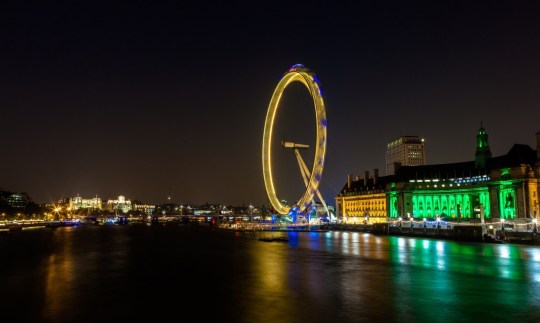
London Eye
I woke up after a good night’s sleep, prepared for new adventures. I was going to start the day by visiting the famous London Eye which is a huge Ferris wheel located next to London aquarium and Big Ben. It is the largest Ferris wheel in the world. It’s about one hundred meters high and weighs approximately 1600 tons. It has got thirtytwo cabins and the ride goes on for about 30-40 minutes. The view from the top of the wheel was fantastic. I could see some of London’s other sightseeing spots like Big Ben and Buckingham Palace. Depending on the ticket you had bought, you could get a binocular and a guide who showed and featured most of the sights you could see from the London Eye.
St. Paul’s Cathedral
After the ride, I went to the Waterloo mainline station which is situated within five minutes walking distance. From there I took the tube towards St. Paul’s Cathedral, a big church in London, built in the 16th century. It is the biggest cathedral in north Europe and the most classicists one in England. It also has the heaviest church clock in the United Kingdom, it weighs 16 tons. I took a tour through this big and beautiful cathedral which took about two hours. It was very interesting.
Not far from the church you could see the river Thames. I went there on a boat trip later in the day. It was called The Route. The trip began at Westminster Abbey. During the boat ride we passed by a lot of old famous historical places like The London Eye, St. Paul’s Cathedral (where I just had been) and Shakespeare’s Globe Theatre. Finally when we came through London Bridge we saw the Tower of London and the Battle-Cruiser HMS Belfast. After the boat trip I had dinner at a very nice restaurant close to the pier. Another great day was finished and later in the evening I went back to the hotel and had a relaxing end of the day.
National Portrait Gallery
The following day, I had decided to visit the National Portrait Gallery, because they had a Pop art exhibition going on. The Gallery is situated in the centre of London, at St. Martins Place. Some of the painted portraits I could see at the exhibition was; Marilyn Monroe, painted by Andy Warhol, and Elvis Presley, painted by Allen Jones. The exhibition was divided into six sections but I thought that it was most fun to look at the drawings of the famous Marilyn Monroe and Elvis Presley.
Trafalgar Square
When I had walked around in there for a couple of hours I went out to get some lunch. Then I moved on to the famous Trafalgar Square. Trafalgar Square is a very big square with a lot of history in central London and is one of Britain’s great tourist attractions. In the middle of the square there is a big column, called Nelson’s Column, surrounded by different kinds of fountains and big bronze lions designed and sculpted by sir Edwin Lutyens and Sir Edwin Landseer in 1939.
On the east side of the square is the St. Martin’s in-the-Fields church and on the north side is the National Gallery. After a lot of walking it was very nice to finish the day by going to the cinema and watch a movie. I went to the Cranbourn Cinema, at Leicester Square and saw a movie called Ratatouille. It was a lovely Disney movie about a rat and a boy that together made a perfect couple in a restaurant kitchen. A lot of complications occurred, but of course a happy ending as always in Disney movies. I was in a good mood when I went back home to the hotel and got to bed.
Shakespeare’s famous theatre
The last day, I hadn’t made up any plans, but the previous day I had found a brochure about Shakespeare’s famous theatre, The Globe, so I decided to go there. But first I had to shop the last things that I needed to bring home, and then do some packing. I didn’t have to leave the hotel before six o’clock, so I had plenty of time. About twelve o’clock I arrived with the tube at Waterloo Mainline station, and from there it was excellent footpaths along the river that took me to The Globe. I had read the story about The Globe and how it was dismantled and moved on a boat over the river Thames during a single night. The Globe is open for the general public seven days a week. I spent almost an hour walking around, exploring the Elizabethan theatre which was from the beginning an open amphitheatre. It is today recreated to fit the modern London It would have been great to see one of the famous plays like Romeo and Juliet or Hamlet, but at this time of the year it was only different lectures and classes going on in the building. So that had to wait.
House of Parliament
After a lunch at the restaurant near The Globe; I headed off, towards the House of Parliament. The House of Parliament is situated at the north shore of the river Thames and along with the Big Ben clock tower. This house is the ultimate symbol in London. I took a seventy-five minute long tour through the Parliament, at a price of £3.50, which was quite a good price. I got to see treasures like; King Charles’s death warrant, the throne and the robing rooms etc. It was really exciting. The tour was certainly worth the time and the money.
The end of the tour
When the tour was over I went back to the hotel and packed the rest of my stuff. I had a couple of hours left before I had to leave the hotel and get to the airport (I had booked a late flight that didn’t leave until nine o’clock). Now I didn’t really know what to do. Then I got a brilliant idea. I could go and see a football game! I looked it up on the internet at the hotel, and booked a last-minute ticket to a match between Fulham v Blackburn River. I didn’t recognize the teams, but that didn’t matter. The game was held at Craven Cottage stadium which was the home arena of Fulham Football Club. I had read that the site of the ground had been built in the late 1700th century, and that it had a historical background. The ticket cost about £20 and the game started at 4 o’clock.
Afterwards, when I got back to the hotel, picked up my luggage and sat down in the bus, I looked back at my trip. Time had flown very quickly, but it had been a very fun and interesting week. I learned a lot of things. I would love to go to London some time again!
1 note
·
View note
Text
Week 15 Chapter 13 Blog
This chapter was all about Gothic art, and where it initially originated from and exactly how it came to be labeled as such. Right in the beginning this chapter gives a brief over view of what Gothic Art is, and how it was the art primarily, “produced in Western Europe.” (Pg. 198 Para 1). Not only that but term of gothic art itself isn’t entirely clear. “The origins of Gothic art had nothing to do with what had happened several hundred years earlier. But when the scholars realized the source of the confusion, it was too late.” (Pg. 198. Para 1)
This in itself was rather humorous to me. Simply in the context of how as time passes, the true origin of something, the true meaning of can be completely obscured to a point where how it came forth doesn’t seemingly make sense. I only found this interesting in the sense that as expressed in previous blogs, the real idea of “is this truly where it came from? What message does this really hold?” Is completely unclear. It simply proves that point of how, all history that we have, we honestly can not know what is true and what is not simply because the “message of” that has been passed on, is simply that. One word over another. Even with physical evidence the idea of where something came from, the meaning it truly holds, is still rather fuzzy.
I also found it rather peculiar how the terms of something can take upon an entirely different meaning in different era’s and or time-zones. When I personally think of the Term Gothic, since being obscured through time, the image that is presented is more so of a dark magic type of feel. Witch craft, pain, etc. Therefore when I first came upon this title I truly felt that a lot of the art presented within this chapter was going to be simply that, dark. Brooding, and lacking the pure beauty that much of the architecture, sculptures, stain glass, among other art within, held.
Furthermore into the chapter, we are introduced to more history of the different types of art that was present during this specific time frame. Not only that, but this art compared to an array of other art in the more recent chapters we have read, seemingly holds an array of architecture, and more so ties into the concept of “religion” and the relevance to churches, and art that initially was created to kind of “praise” an array of those who were seemingly praised during this time period, and or those that come from say Christianity, or the specific religion that this era praised as well.I found it rather interesting when I encountered this portion within the chapter,
“Suger was inspired by the author’s emphasis on the mathematical harmony that should exist between the parts of a building and on the miraculous, mystical effect of light. This was elaborated into a theory based on musical ratios; the result was a system that expressed complex symbolism based on mathematical ratios.” (Pg. 198 Para 4)
Which this man then used to sway how he reconstructed this specific church, and how he initially used this message as a relevance to Christ and used that as a foundation for Saint Denis, and an array of art that was created moving forth. “The new style was particularly popular in northern and central France.” (Pg. 200 Para 1) It seems that this style of “Gothic Art” In turn sparked an array of architecture to be created, one’s that held such detail such beauty, that the layout of was initially used in a variety of architecture/churches/buildings, (such as piers, flying buttresses, Pointed arches, ribbed vaults, and of course the skeletal structure.) that were then created.
In fact. “French architects built over eight Gothic cathedrals. And then “migrated north to England, south to Spain, and east to Germany and Austria.” (Pg. 200 Para 1) Although I am not too fond on architecture, I felt that this simple detail and history from this era, was extremely unique. Just the concept of seeing how fast news can travel, and in fact when art is admired and seen as something of beauty, how it then can expand rather quickly world wide.
Aside from Architecture, one that seemed very fond during this era there was also stained glass window art, “which filtered light through colored fragments of glass.” (Pg. 201 Para 1), Chartres, and sculptures of charters. I personally found these to be extremely appealing to look at. Even though a variety of the sculptures were of popes, Mary, Christ, or others, I still felt that they made the architecture/cathedrals themselves more beautiful. Aside from the stain glass windows and much beauty done by the detail from inside the churches, I think bringing forth these allowed for these different buildings to have more personality. As expressed in prior blogs, I am not too big on architecture, therefore reading about this, seeing much detail done from, I felt that it then allowed me to be more interested in this type of art overall. It was rather nice to also admire the pictures presented in the book simply because I personally have never seen much of that type of art in person.
Although I am unsure of where I stand religion wise, and currently do not have a religion I stand by, I still again find it rather interesting that a variety of the art that was created during this time among others was revolved around Christianity, like was there truly nothing more they could relate the art they created off of? “Wherever possible and appropriate, Gothic artists integrated Christian dogma into the cathedrals.” (Pg. 212, Para 4) It just makes it seem that a lot of the artists during this era lacked charisma, and or their own individuality in terms of the artwork they created.
Although beautiful, the stain glass, the churches, the sculptures outside and inside the churches, the layout of them themselves, I still feel that this concept of thought this concept of only basing your art upon on thing, pulls from really bringing forth your own creative edge. Gothic art spread rather quickly, which is great, and seeing how quickly it can spread is also great but I just personally feel that when copies of things are extended, it truly does pull away from that individuality that each artist could then present. But yet again, this is based upon my one opinion and based upon a female living in 2019 compared to the era they came from.
The art they created during this time frame was beautiful and reading upon the history of was rather interesting, and truly opened my eyes to having a much more in depth perception of what Gothic Art was, where it came from, what inspired it, and the background of it as a whole. It was truly an interesting read!
0 notes
Text
The Middle Ages


Most recently near the middle part of our school year, we talked about the middle ages and the big burst of cultural that was happening. One thing in the western civ class I was taking we never touched on the art aspect of how it affected the world. One focus of our studies was the Gothic art. This chapter not only did not focus on Gothic art, but it focused on Middle Eastern middle ages art, styles, and forms of art. This is something I really enjoy as most of my friends are Islamic and with that said I have always wanted to study more about them. With the first part of the chapter focusing on Islamic art and less of western European art, this became a really fascinating and informative chapter.
I would have to say that the Islamic portion of art was very interesting. It was only a small portion of the book and I became very interested in it. I chose to ask my friend Joe (who follows the Islamic religion) about it and asked questions like why would they choose to not use sculptures and why they believe it was Satanic not only there, but in any of their works of art and questions about the mosques. Not only did he tell me about them he told me where he went to his and how they are as people. He told me many of the Christian churches no matter what branch throughout history would have sculptures of naked men or naked women. Unlike those Christian religions, the Islamic people believed that it would put Unpure thoughts and the person who is looking at the sculpture painting or structure. he said the Christians used it as a way to depict people and it would be seen and sometimes a holy thing, but the Koran clearly states that it was a sin to have Unpure thoughts put into your mind and the sculptures would depict genitalia area and under the rules of the Koran that would be against Allah. He said it would be Satans temptation to do evil. Mosque are a place of worship and should be a place of great beauty. Islamics spent no expense on these Mosques and places like the great mosque of Cordoba show us that. Not many people know that there are not many mosques in the US, but one of them are located in Dubuque Iowa this is the one my friend attends. I've never gone in, but the exterior of the mosque is truly amazing. It was built most recently and it is truly beautiful, but it has nothing on the mosque of Cordoba. the pictures of this mosque are truly amazing arches of the mosque truly astounding creating a deep visual large spacious effect to the mosque. Something I found to be very interesting was that the Islamics do not depict pictures of God or Allah as they believe it is against his will and if they do this it may become idol worship as people chose to see that depiction of Allah rather than let him be all powerful.
0 notes
Photo
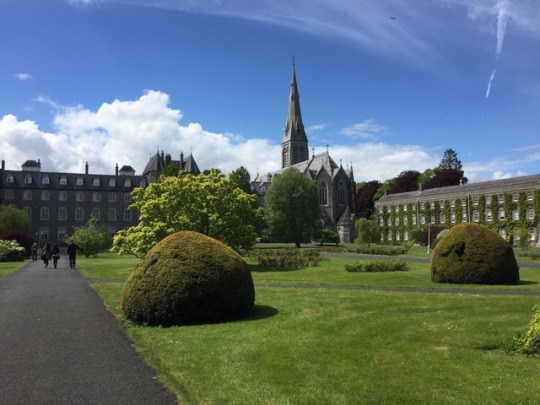
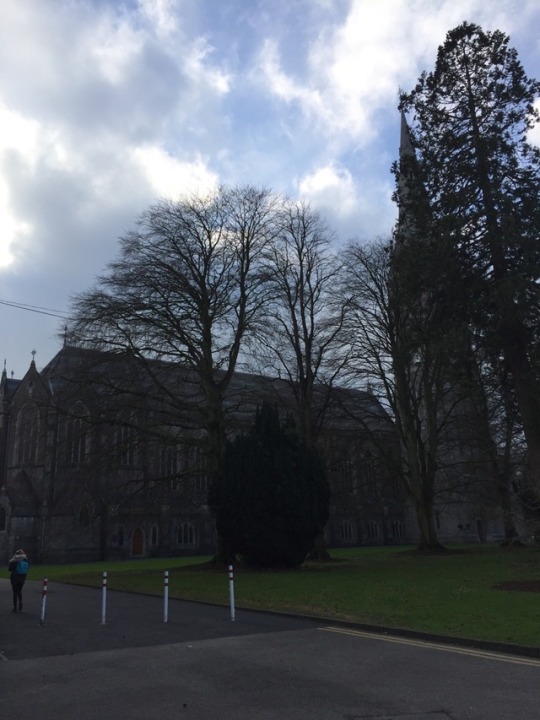

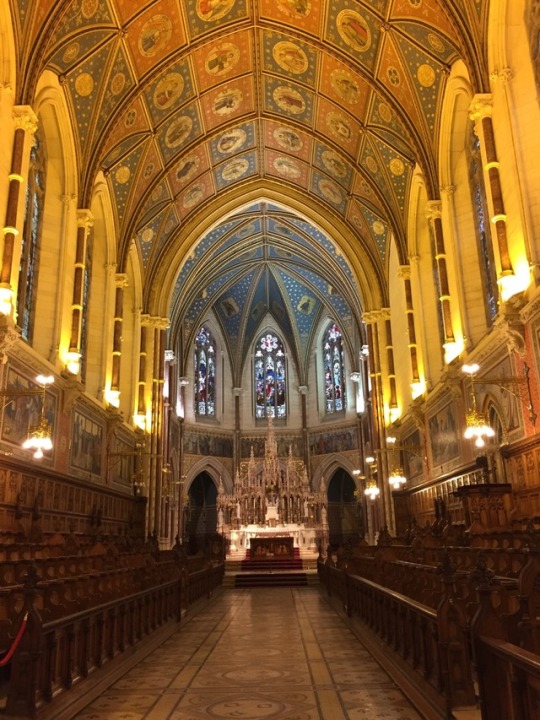

My first article will be about Maynooth, it was the city where I lived this semester. It is just at 20 km from Dublin. I was on the oldest Irish campus. My south campus look a little bit like “Poudlard”. (I post a picture of a quick time of sun haha)
My big campus is filled of hidden history…
I met someone who worked on the University.Thanks to her position, she has access to some place student can’t visit. It is the case of The College Chapel of Maynooth.She had the kindness to proposes to me and the boy to visit this Chapel ! And it was a really opportunity. It was the amazing ! The greatness and the size of this Chapel make it so majestic !
This Chapel has a strong story : It is known to be one of the most beautiful places of worship in Ireland. The College was founded in 1795 as the National Seminary, and this is the principal Chapel of the College. Over 11,000 priests have been ordained from Maynooth since its foundation, and they have ministered in every parish in Ireland, and most parts of the world.
As you enter the Chapel by the main door at the western end, the first impression is the neo- gothic style, everything points heavenwards, the arches, the ceiling, the windows and the finials.
1 note
·
View note